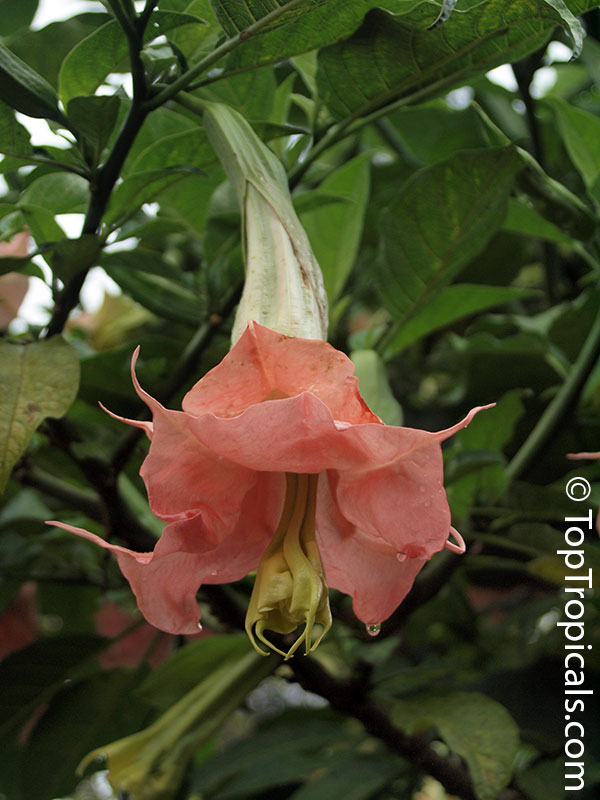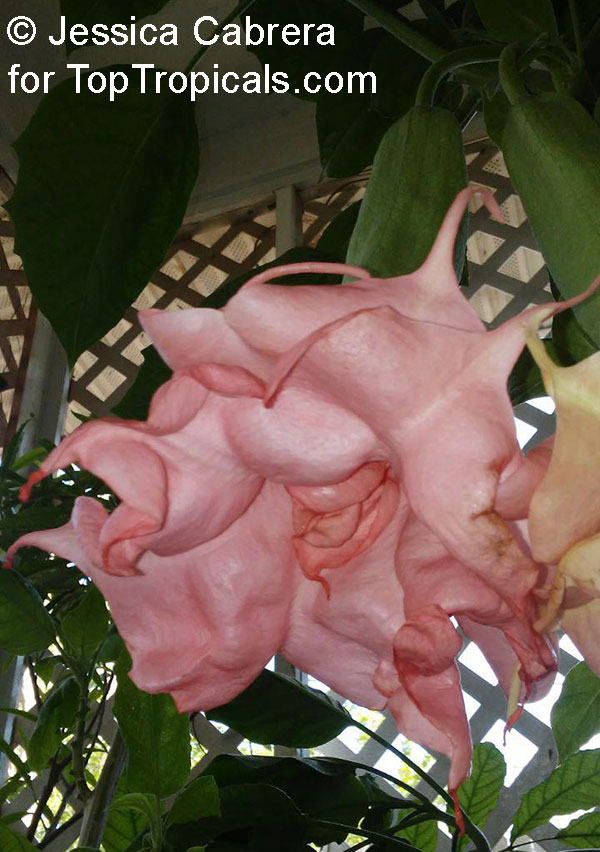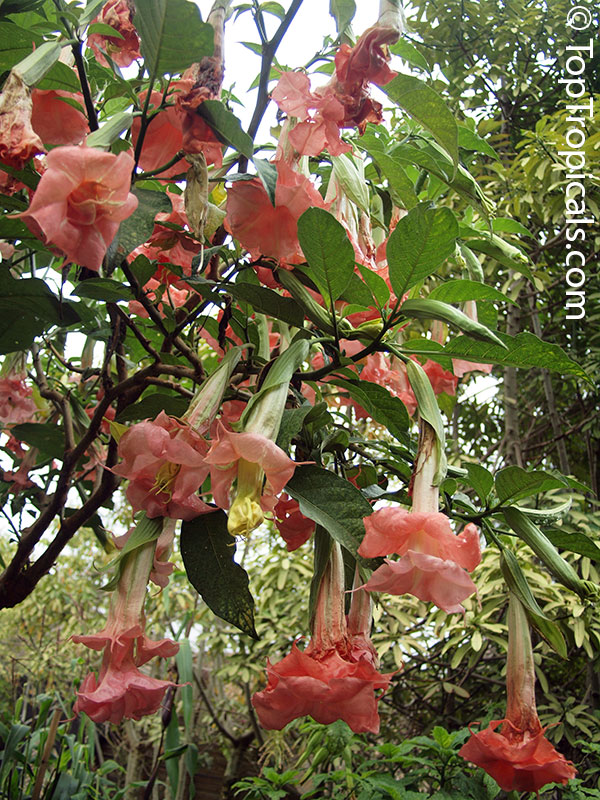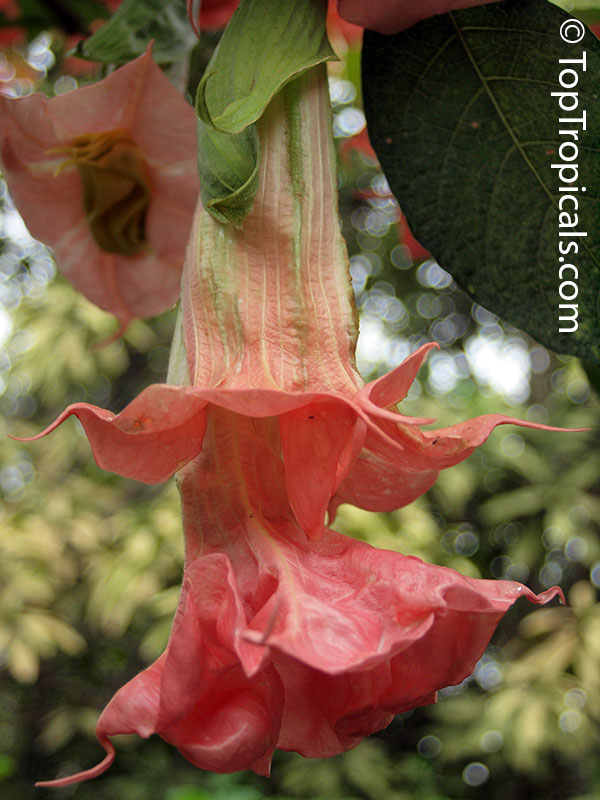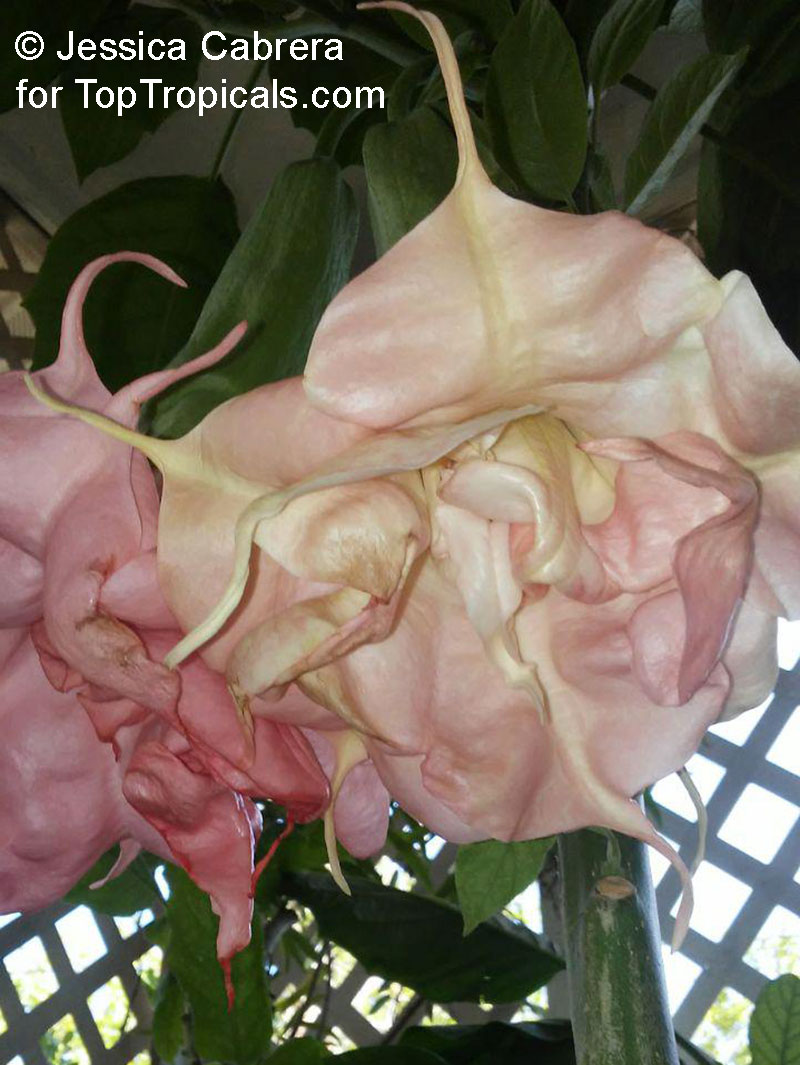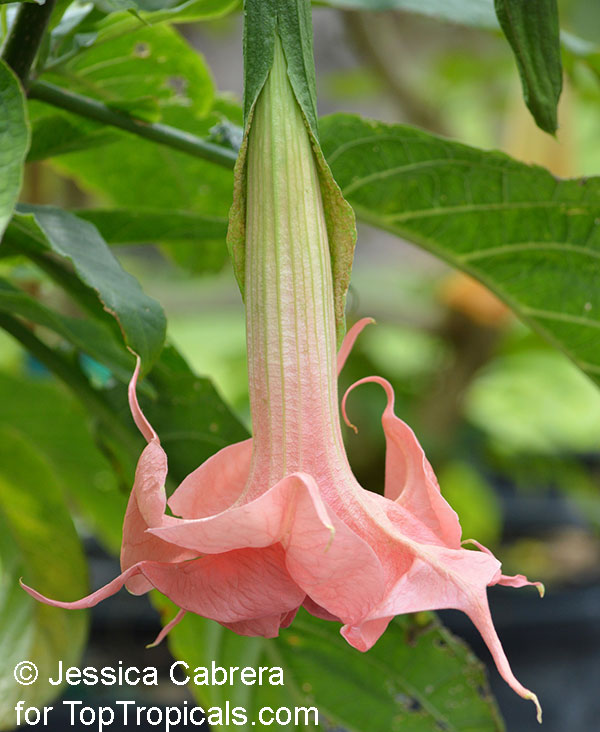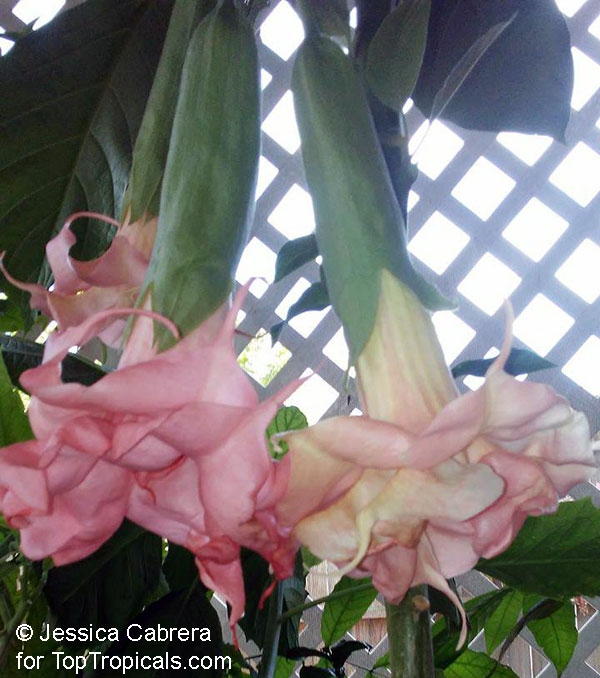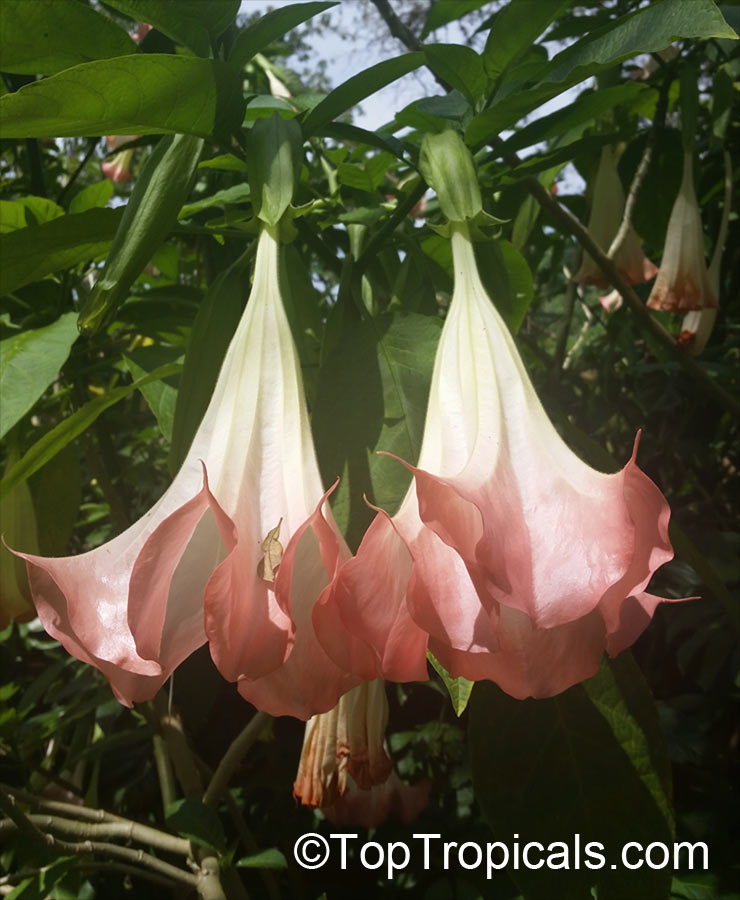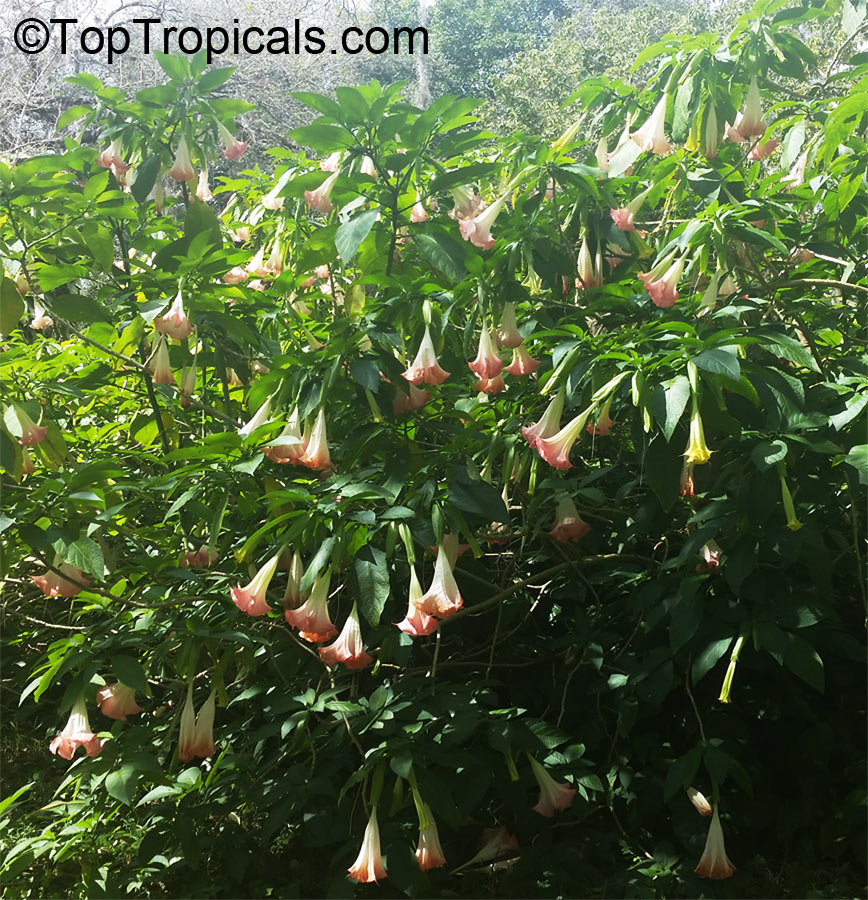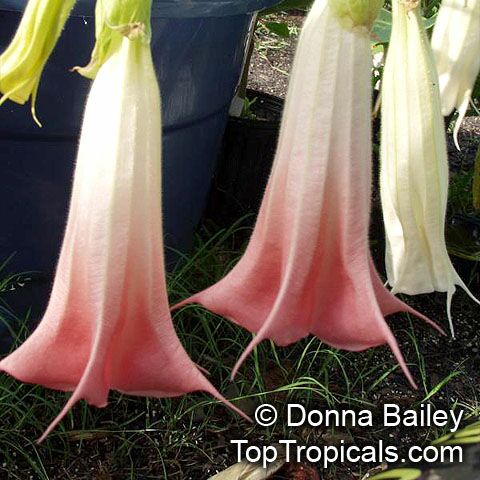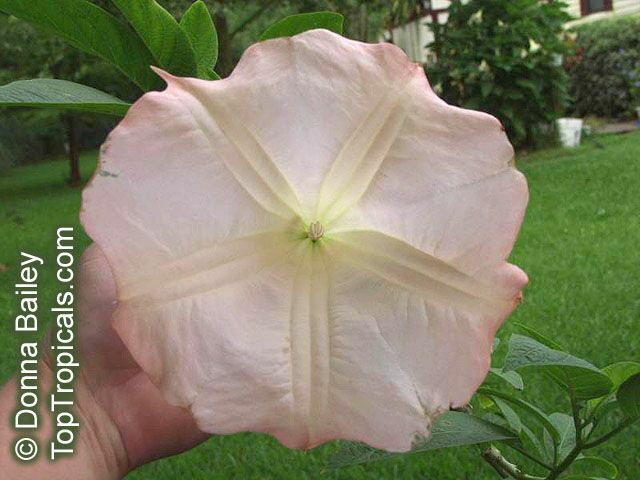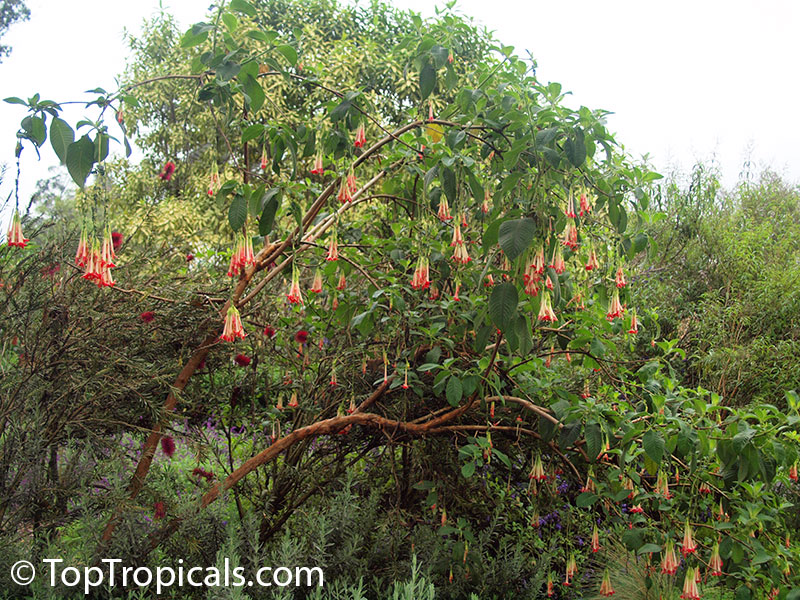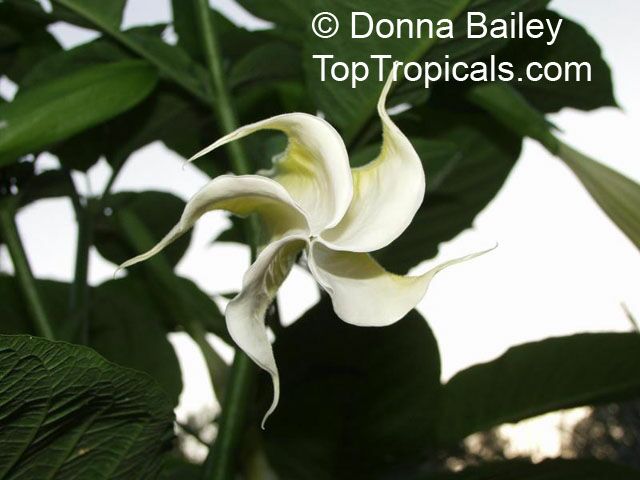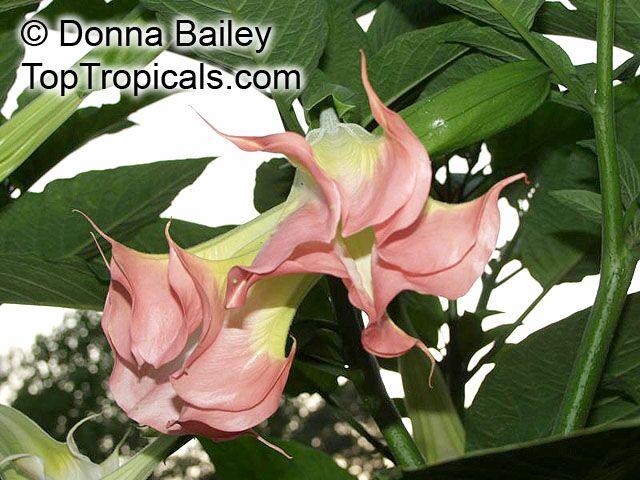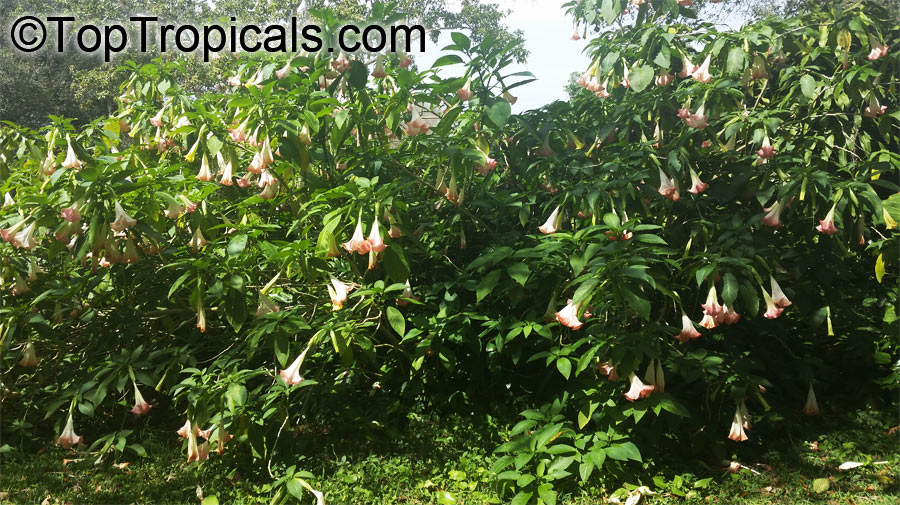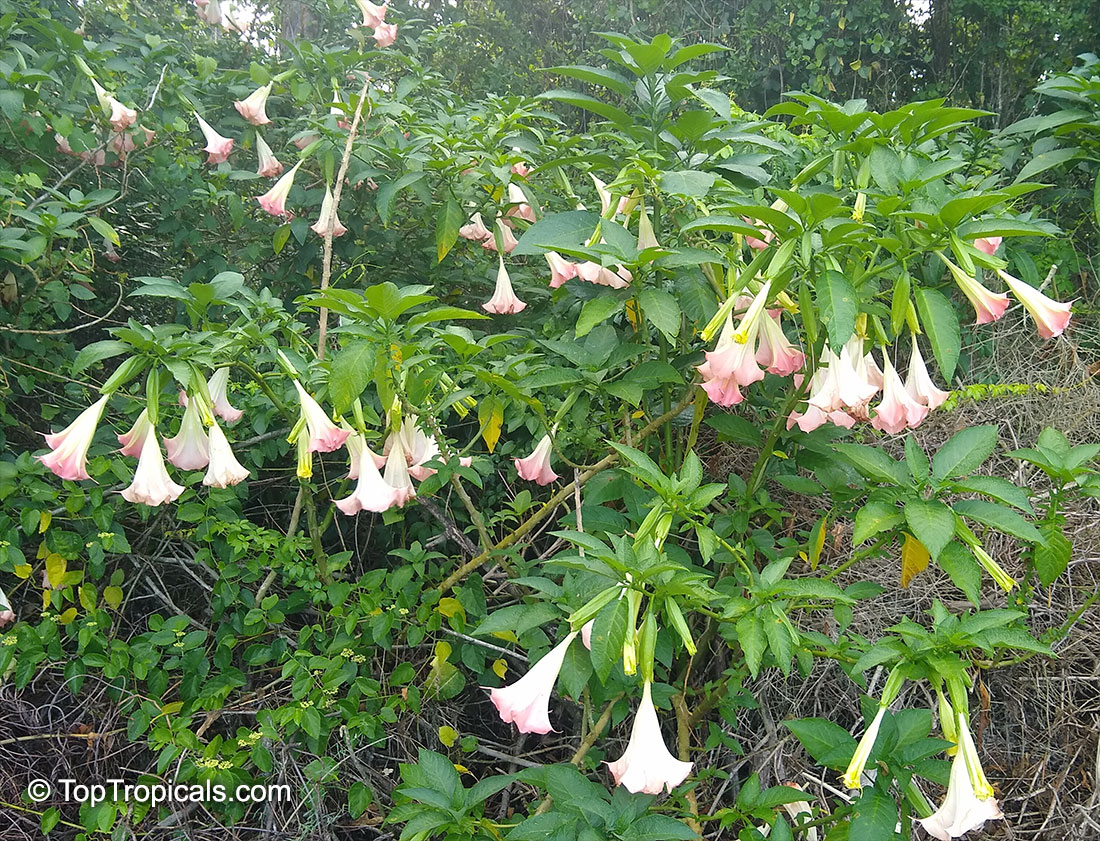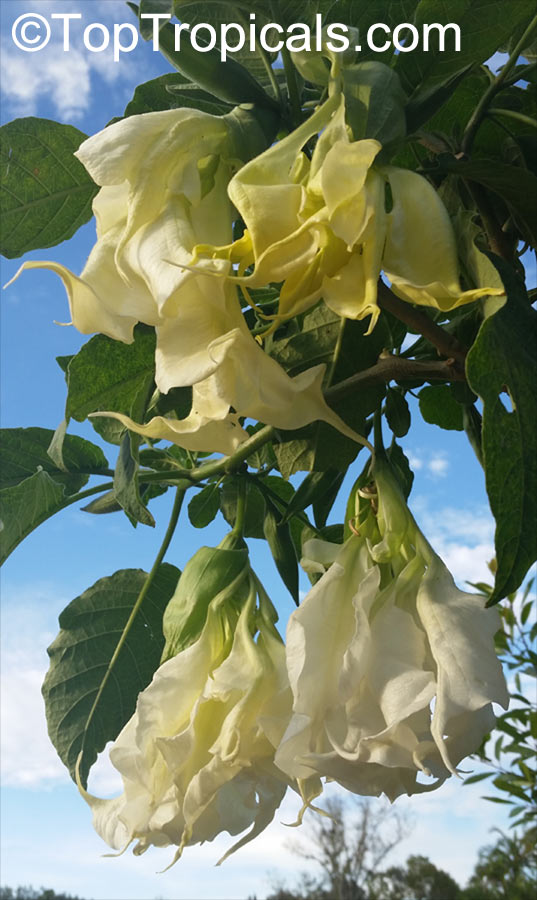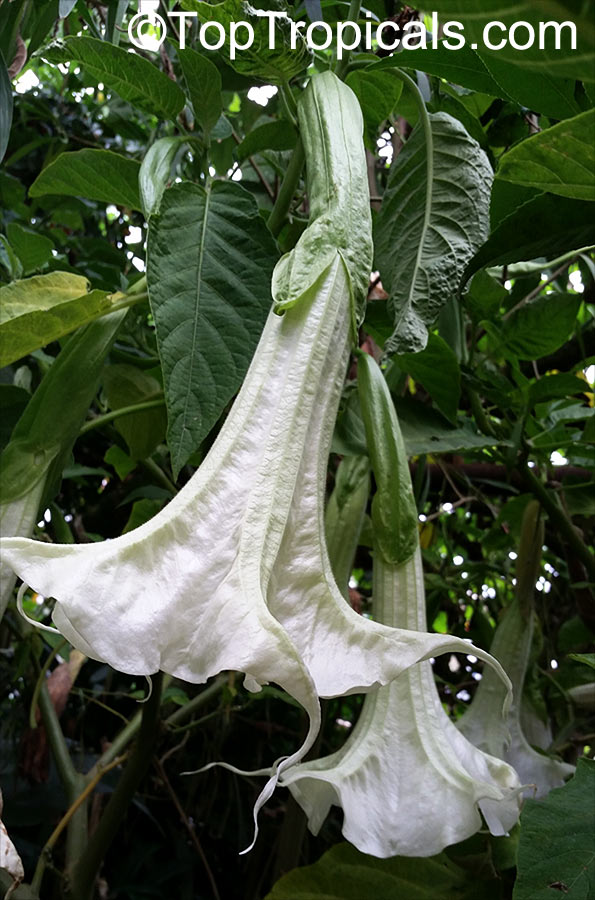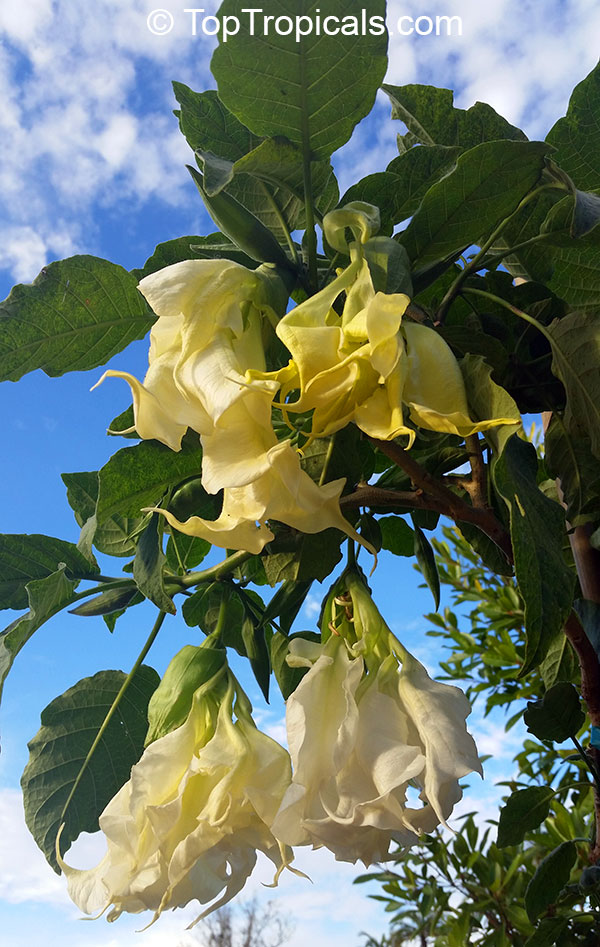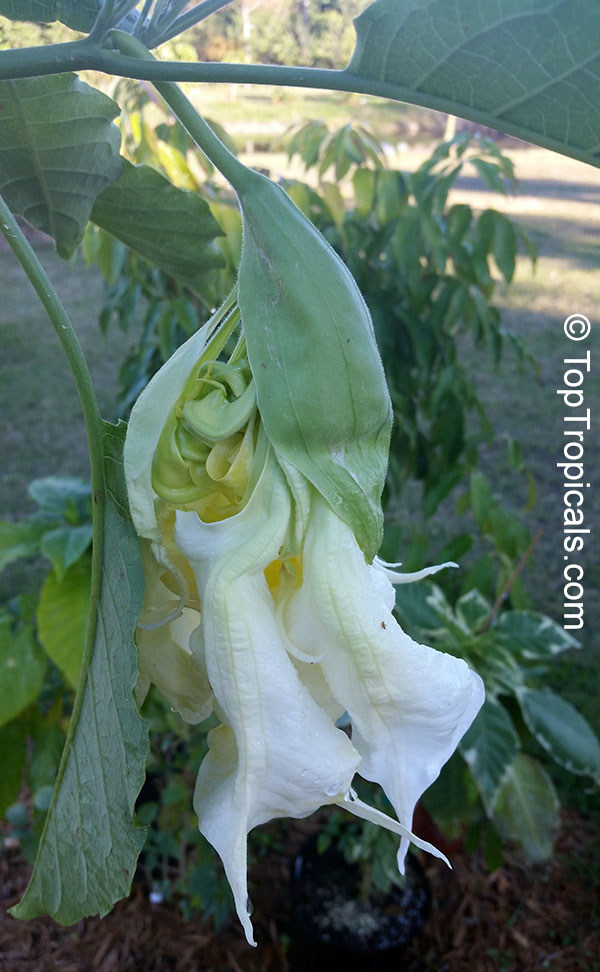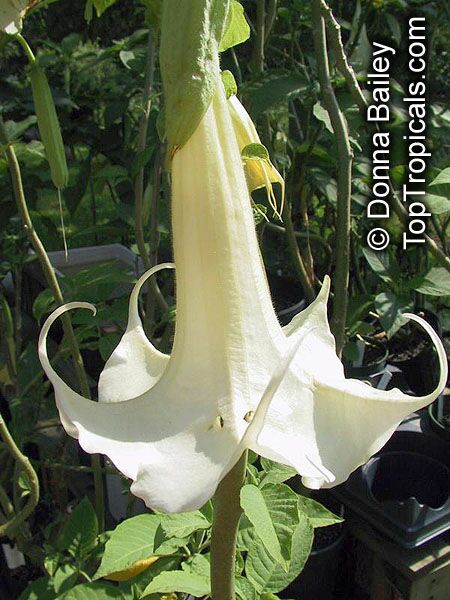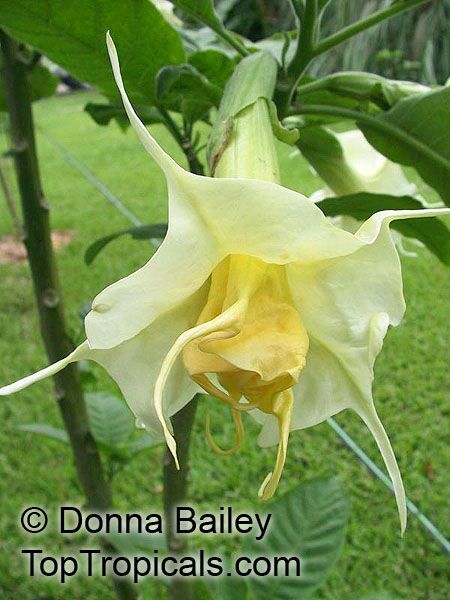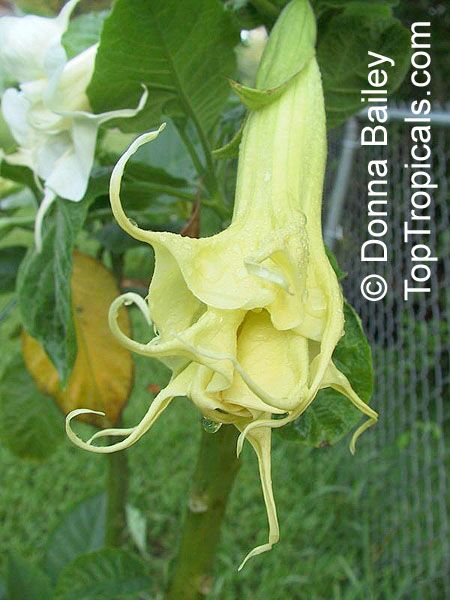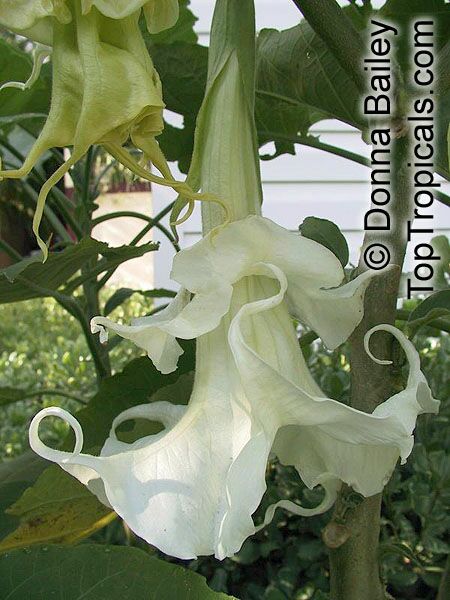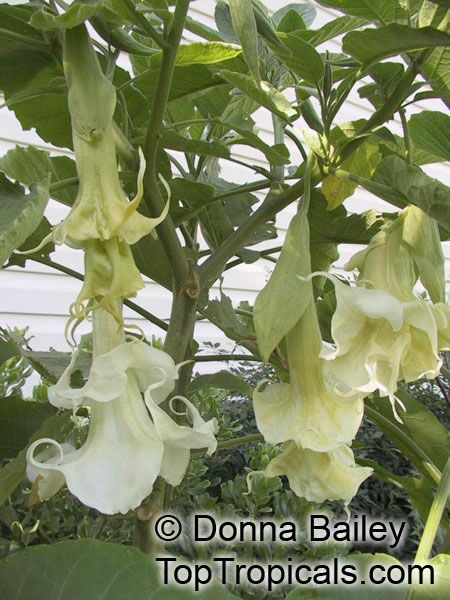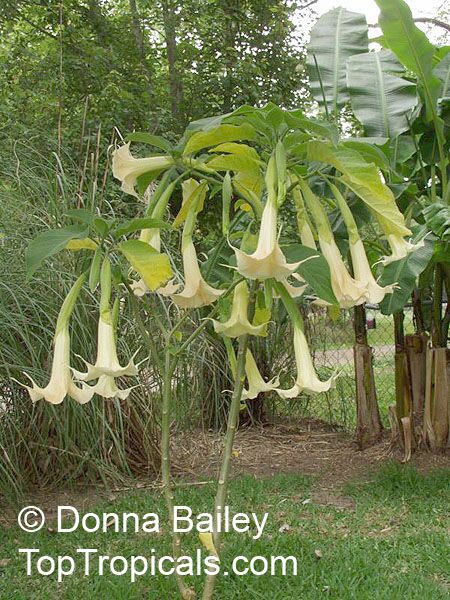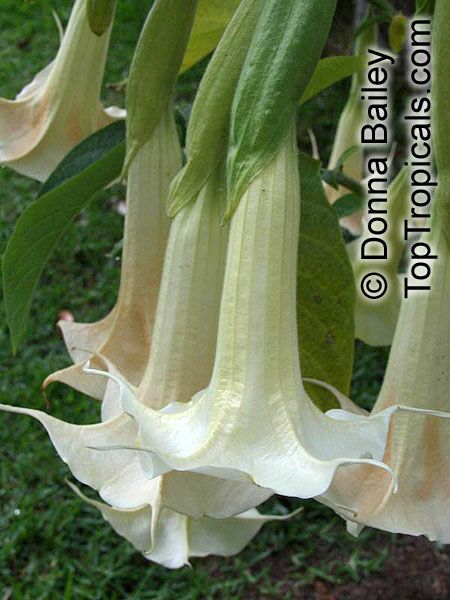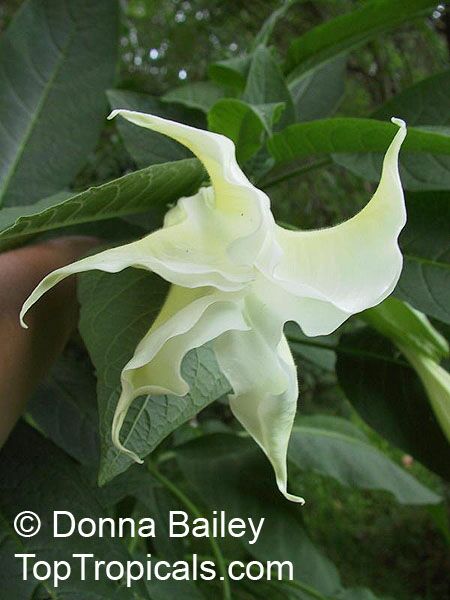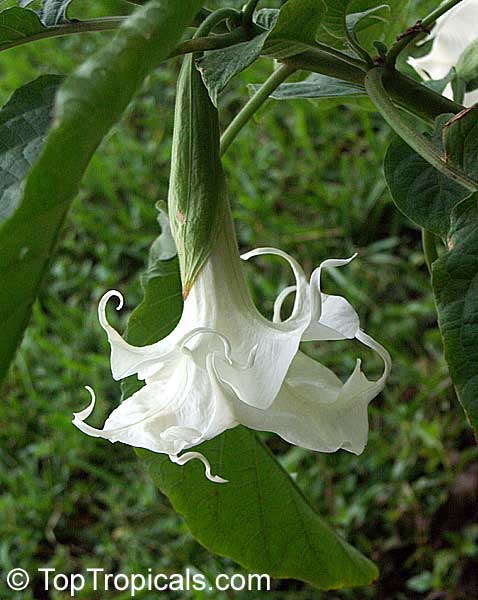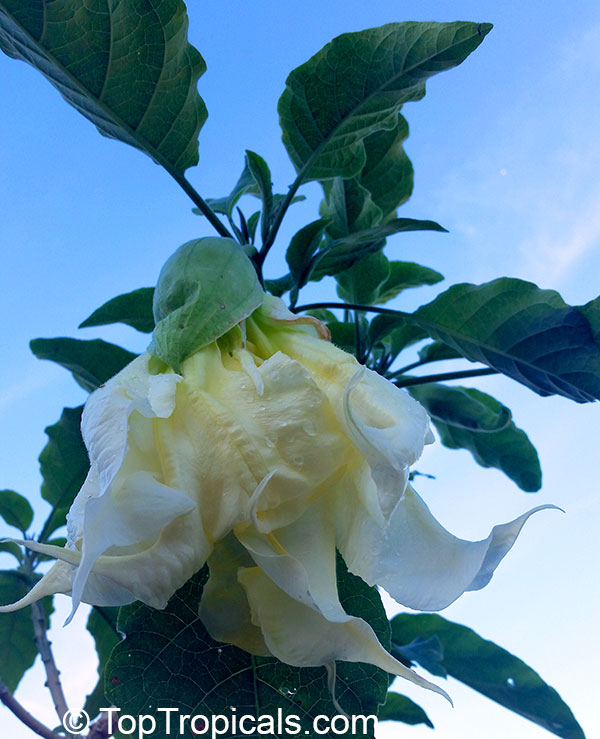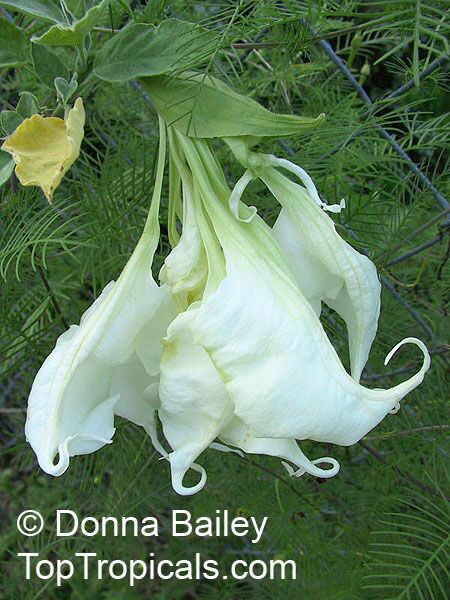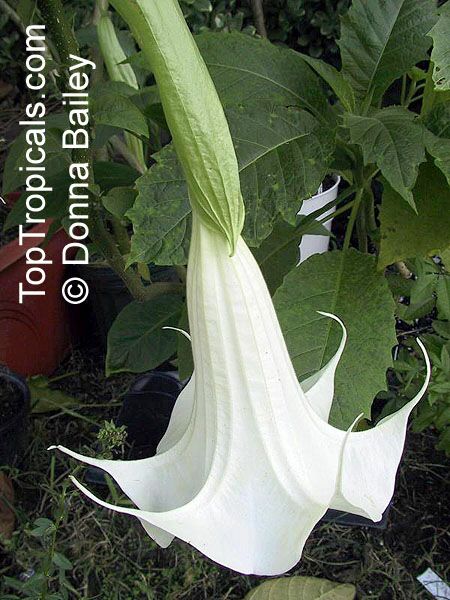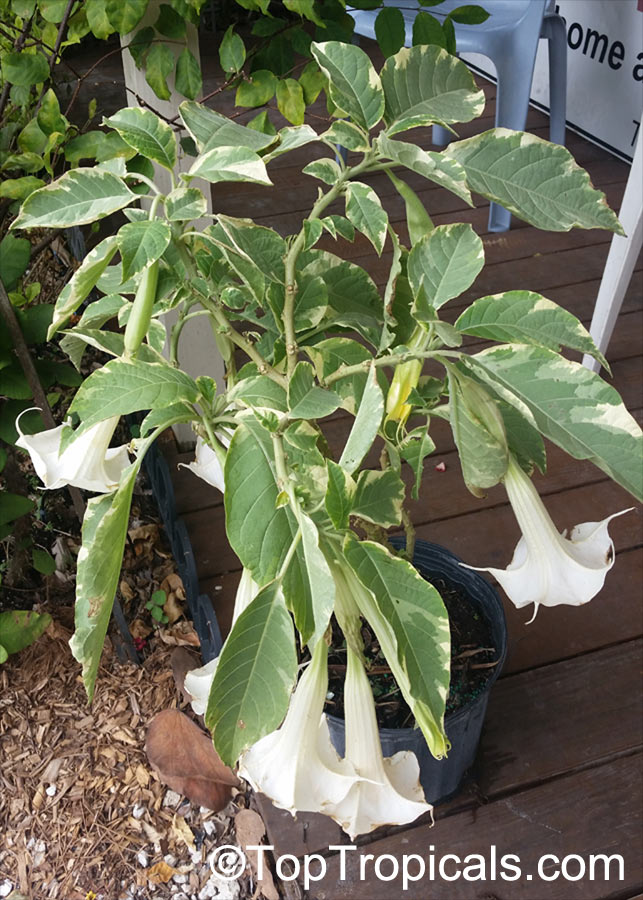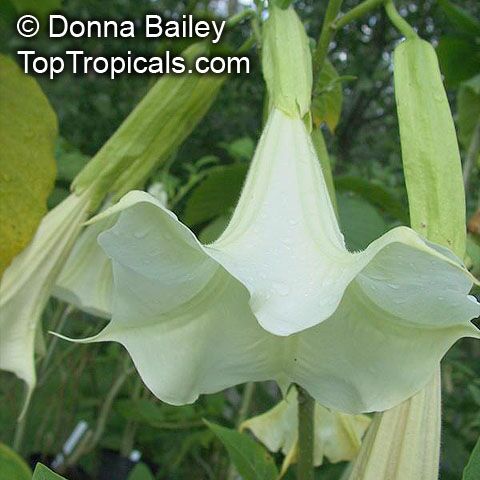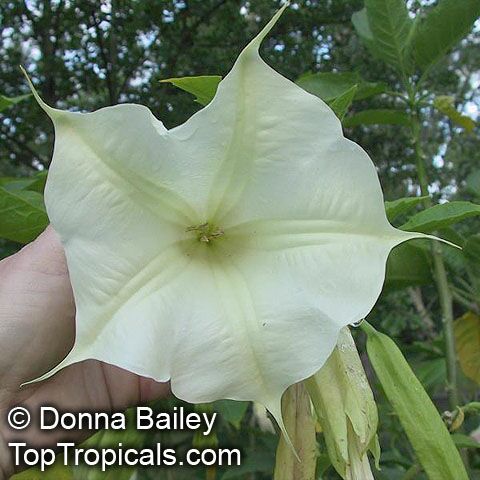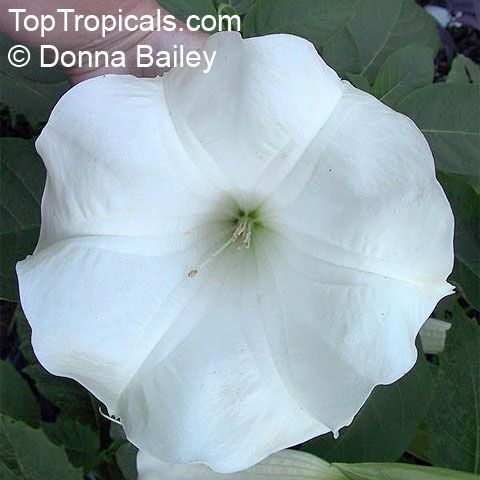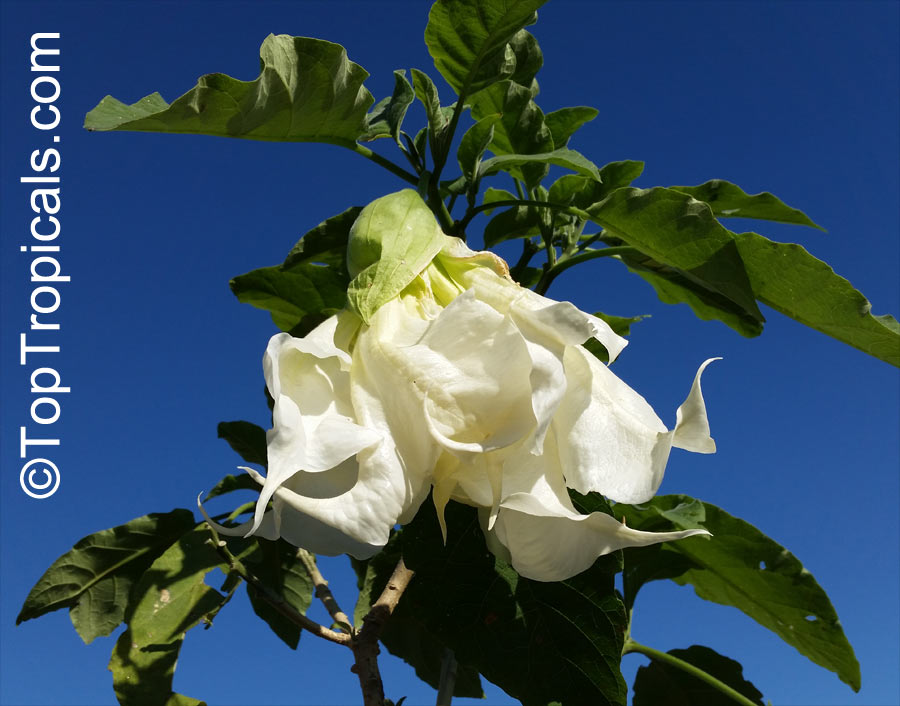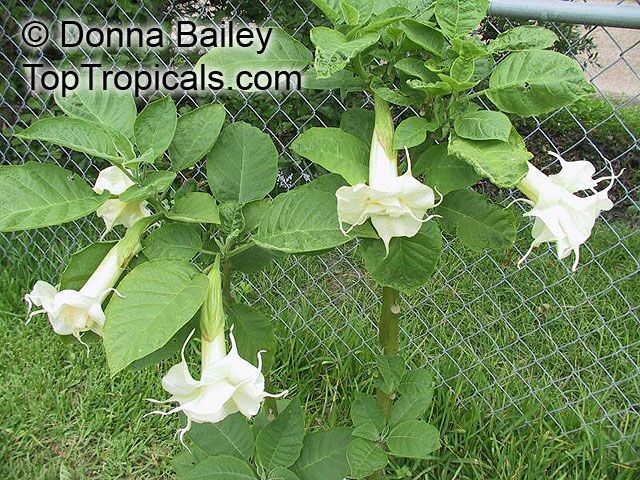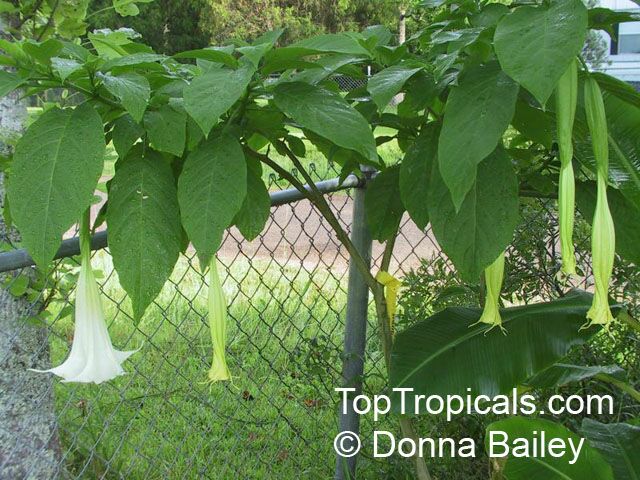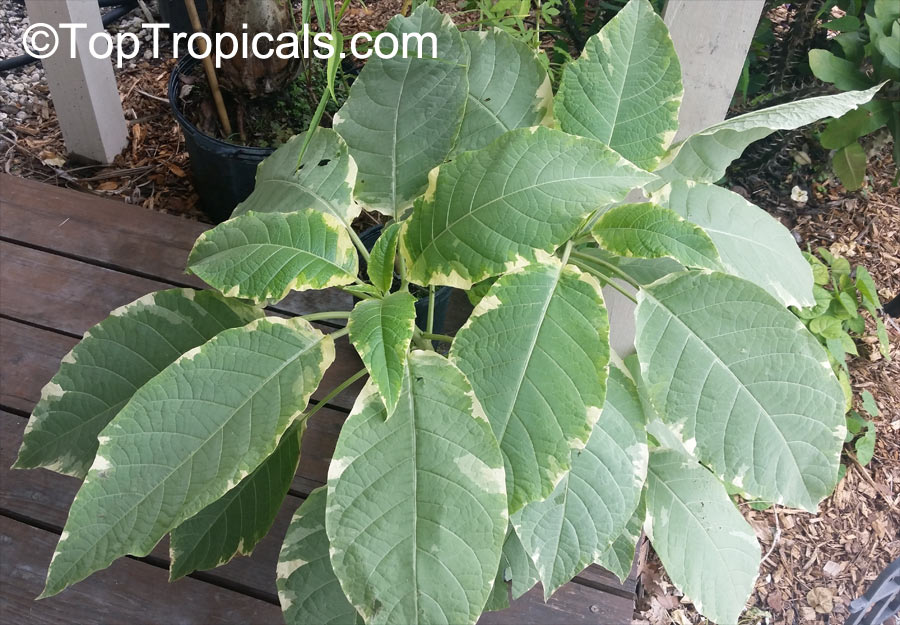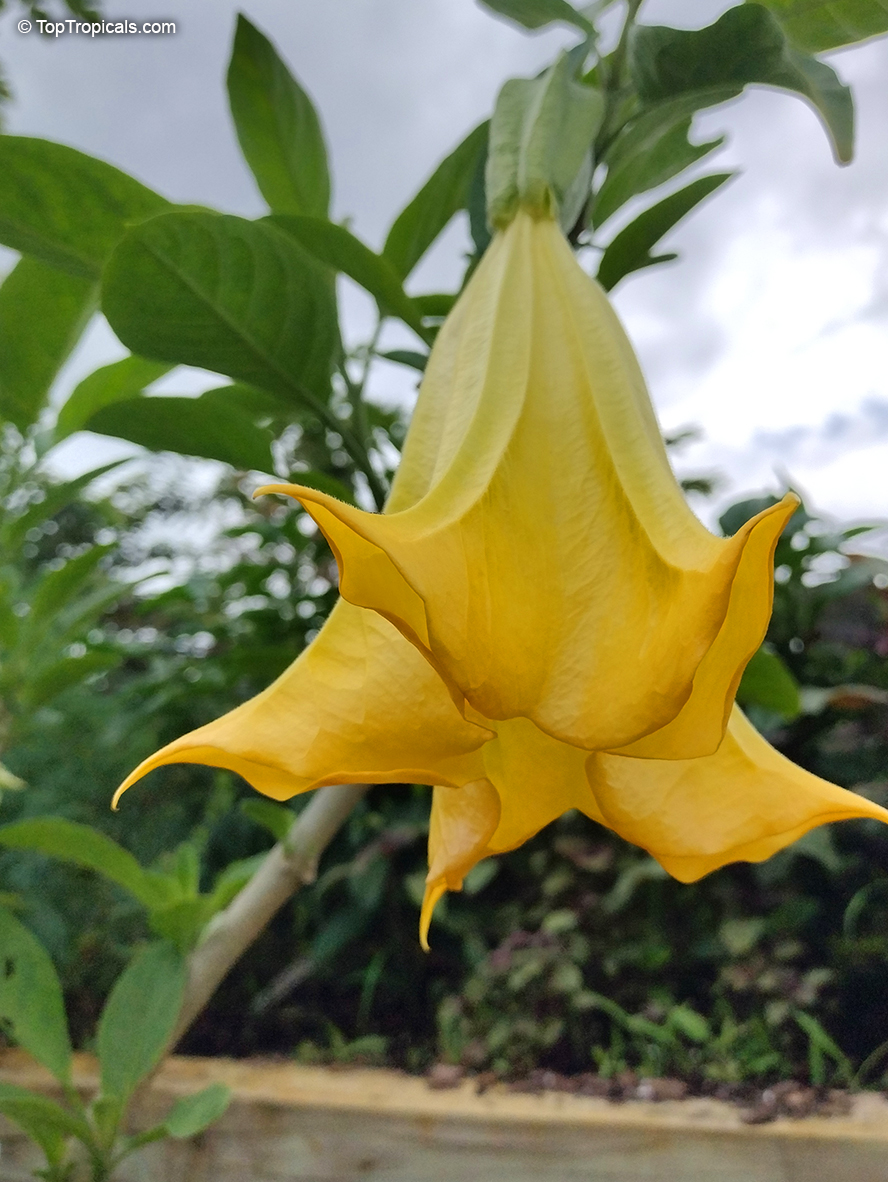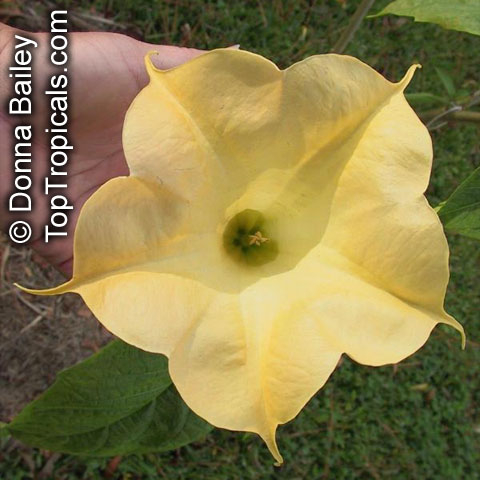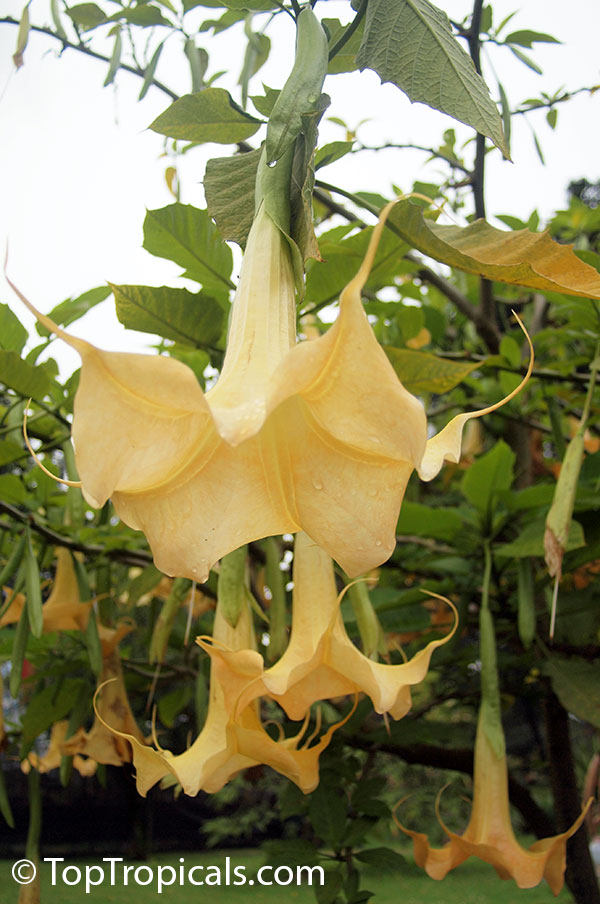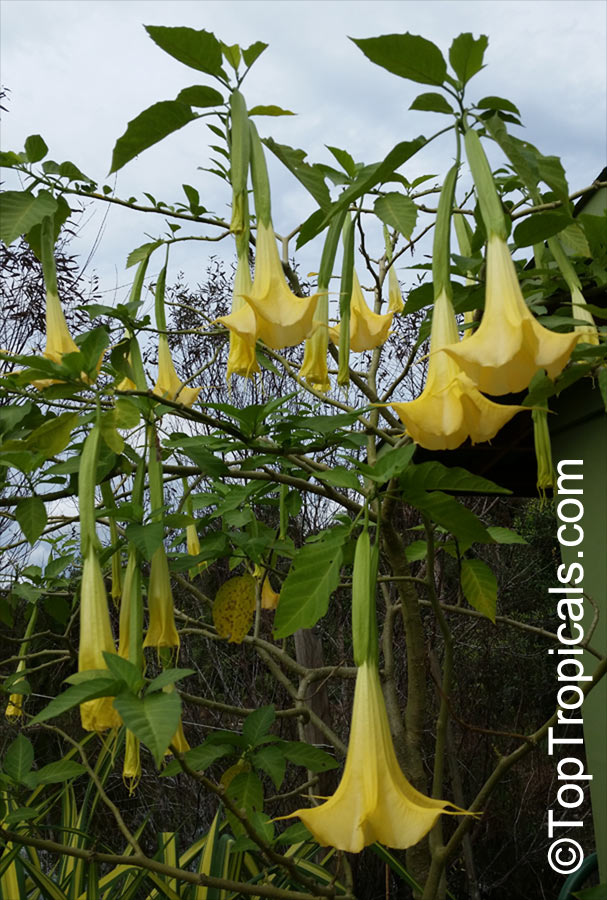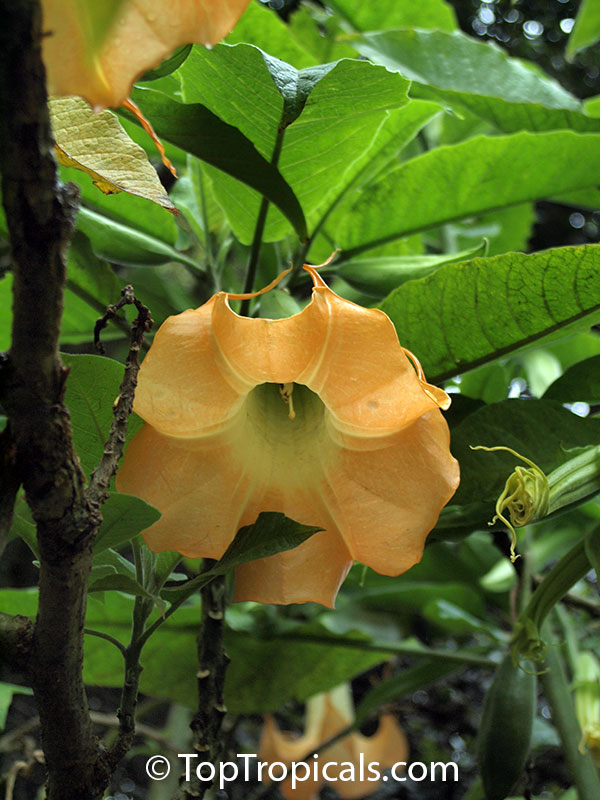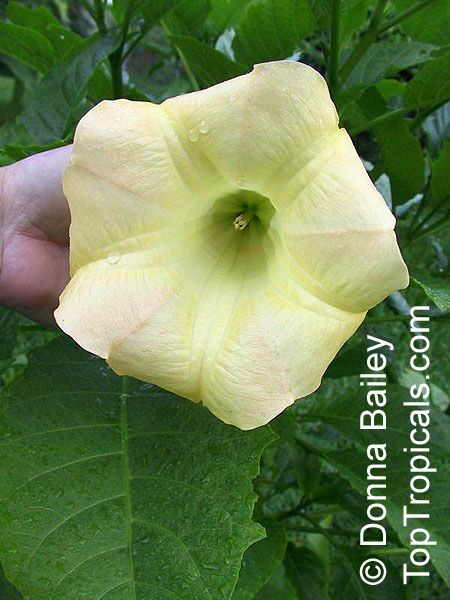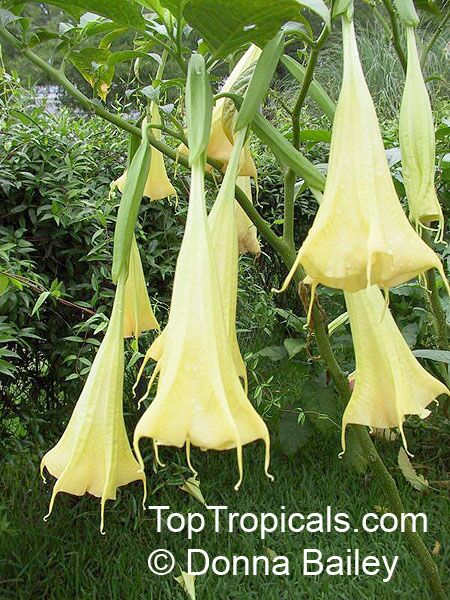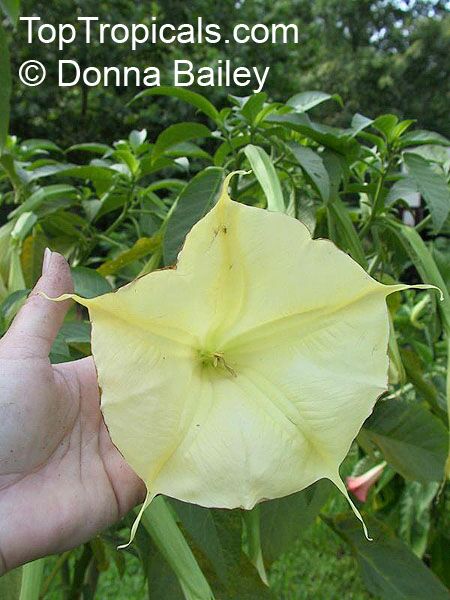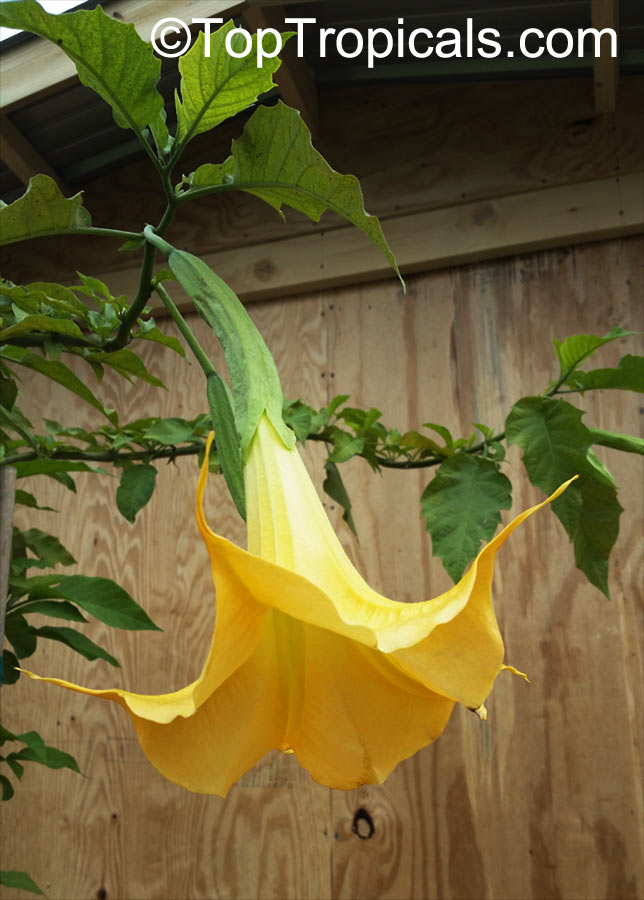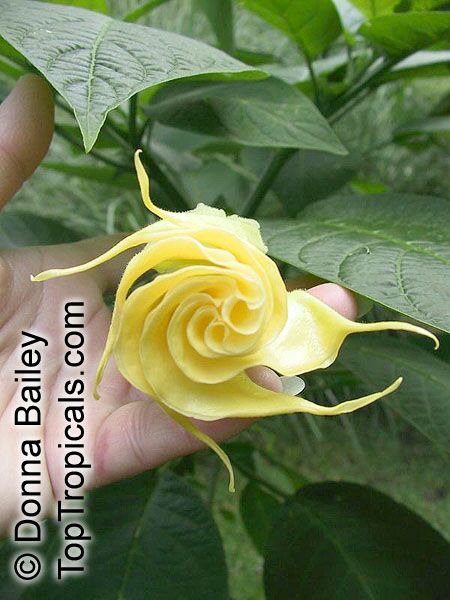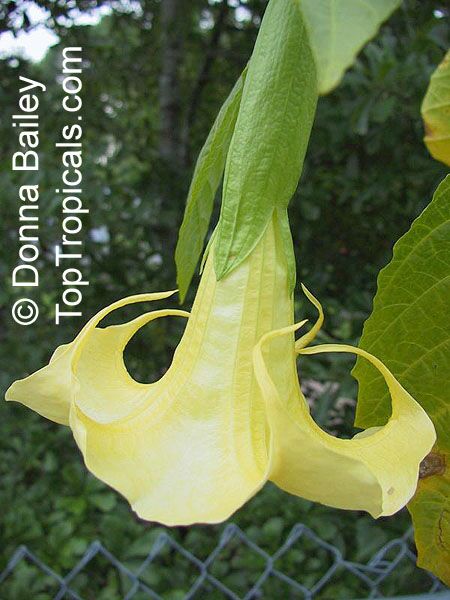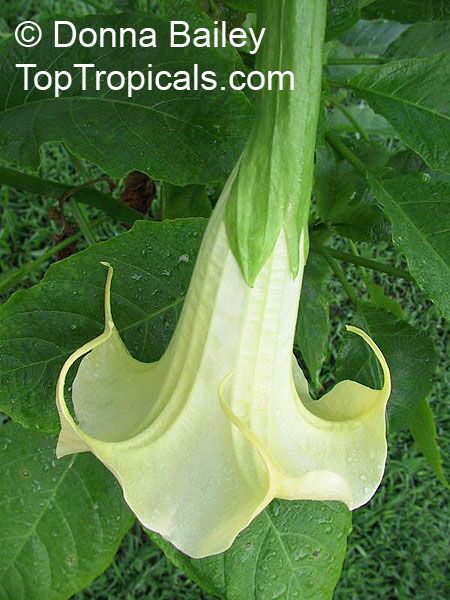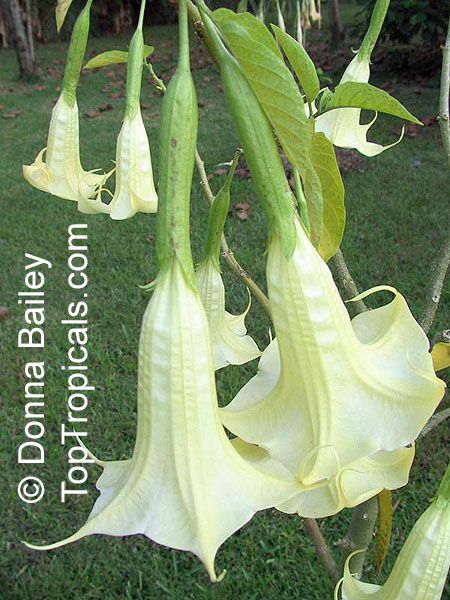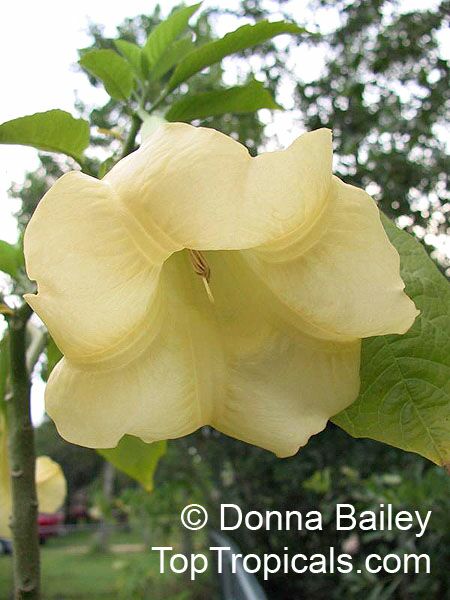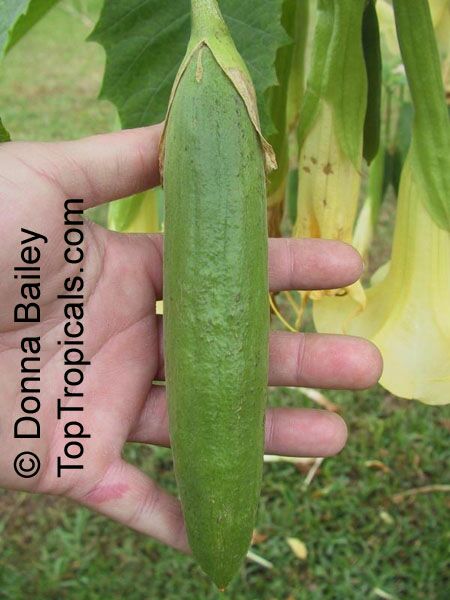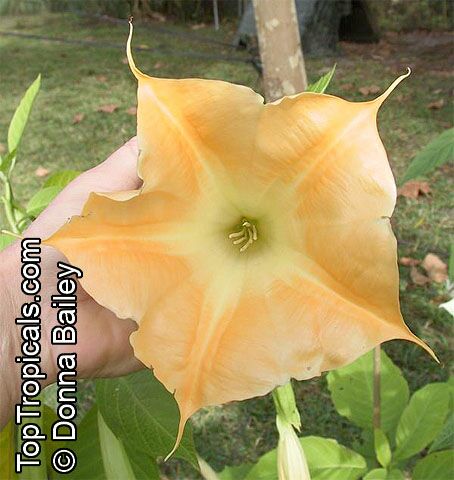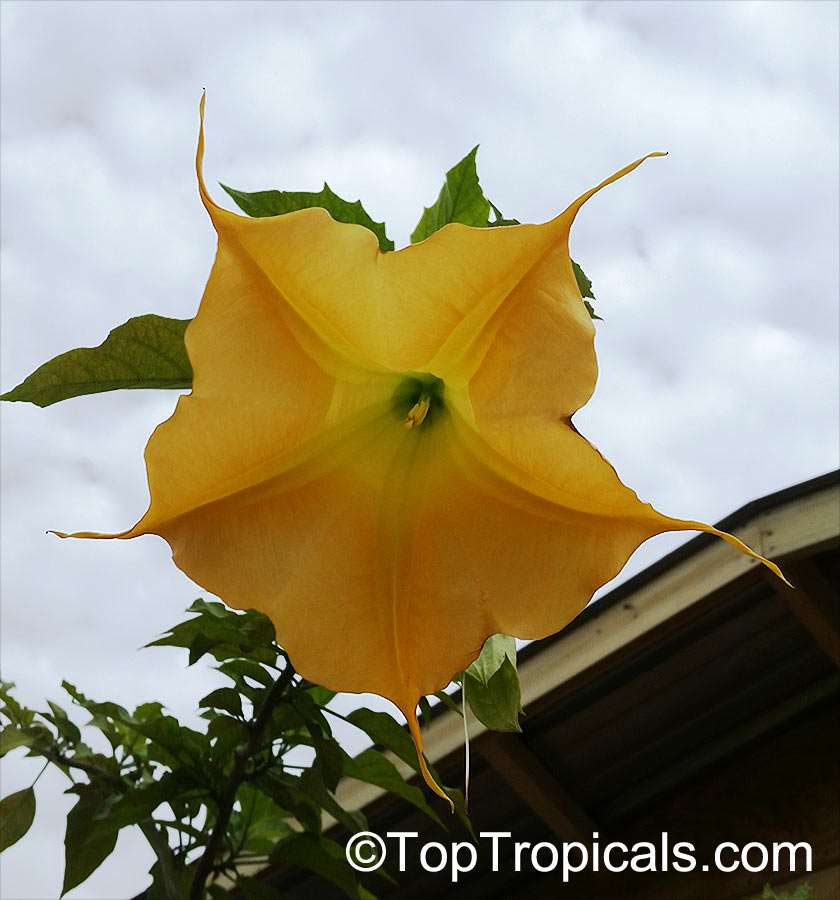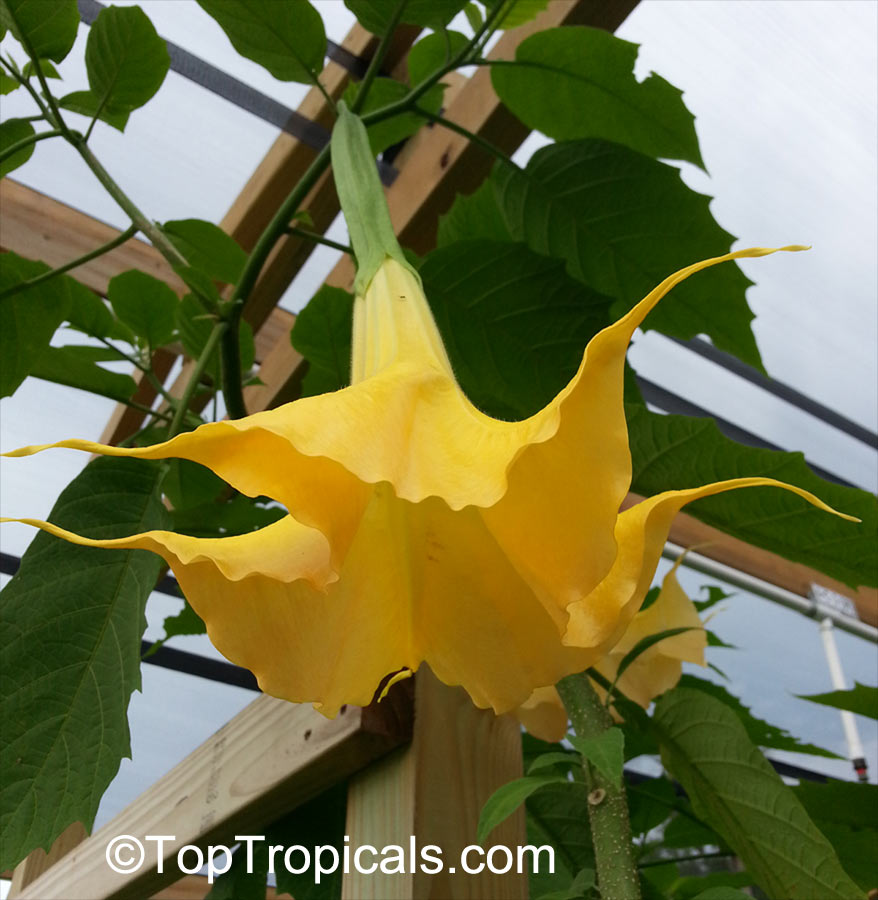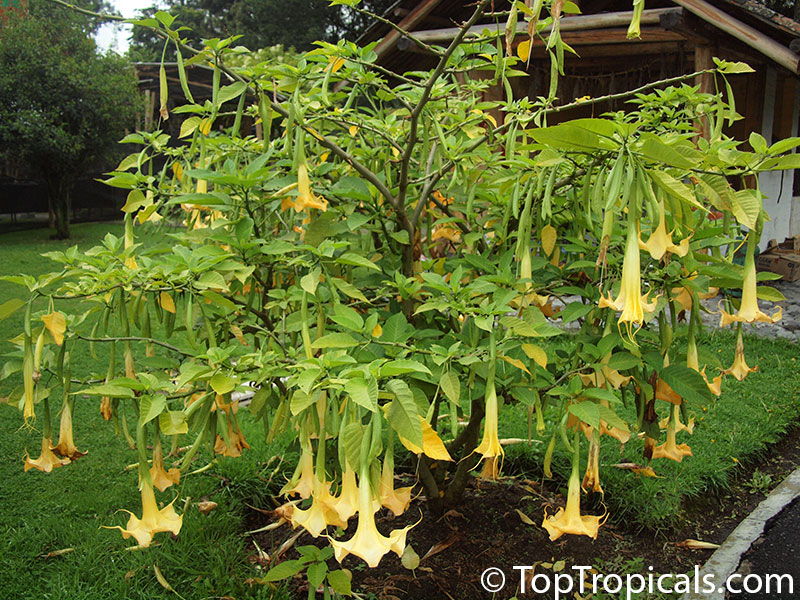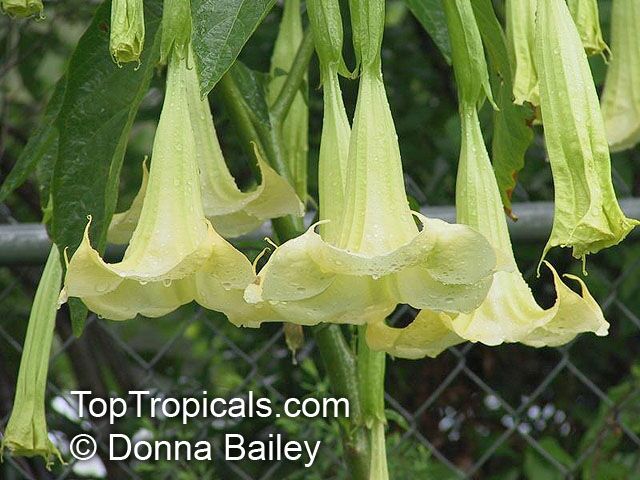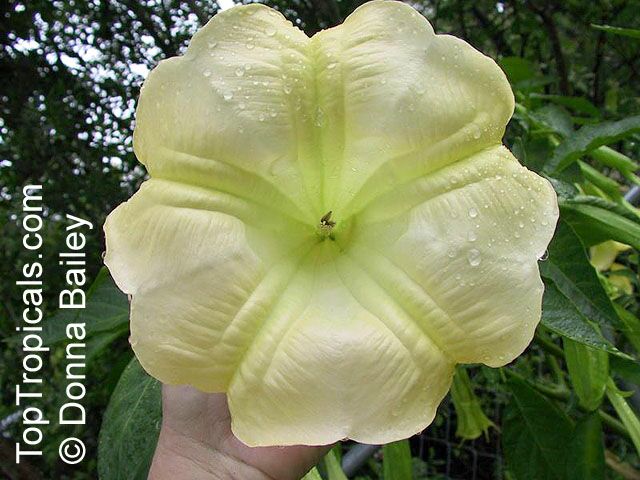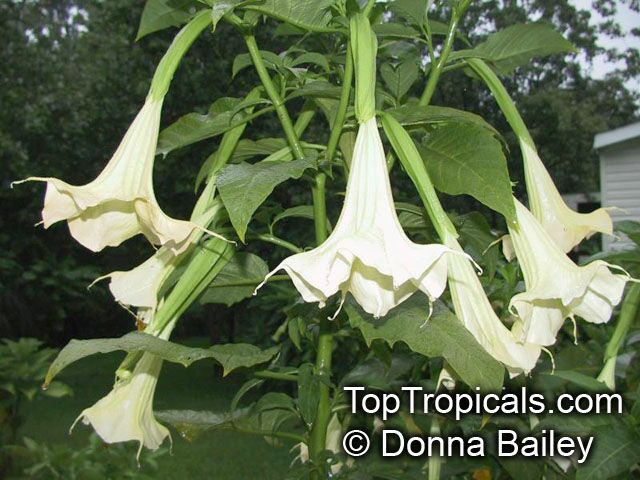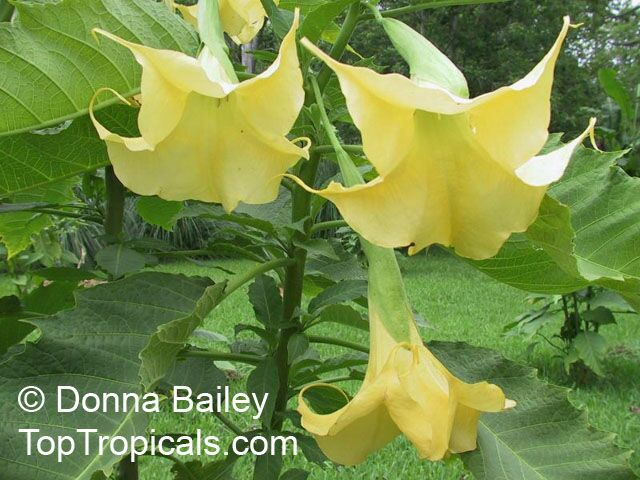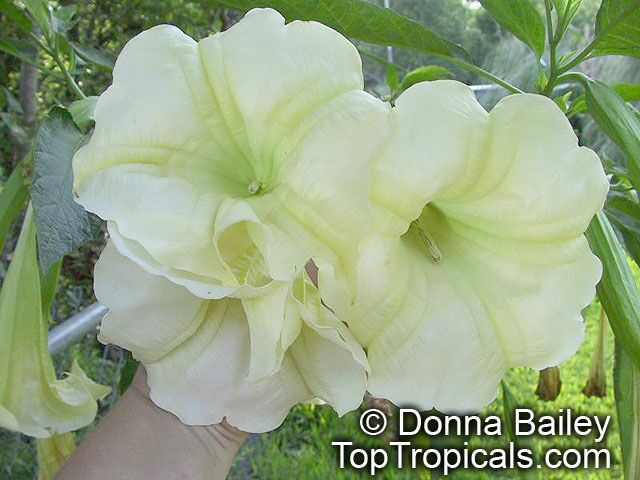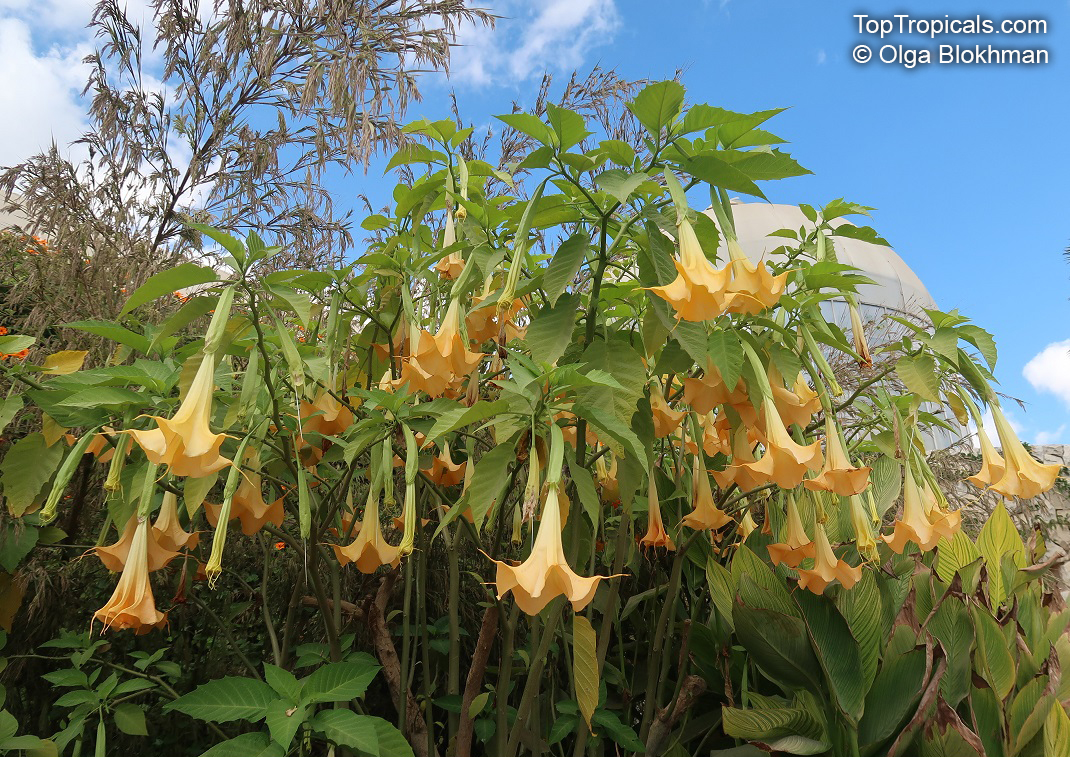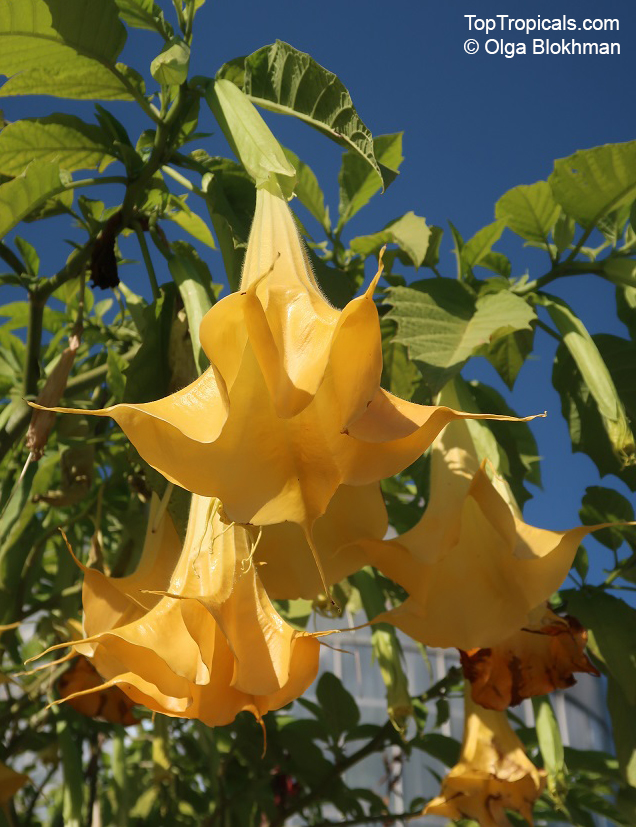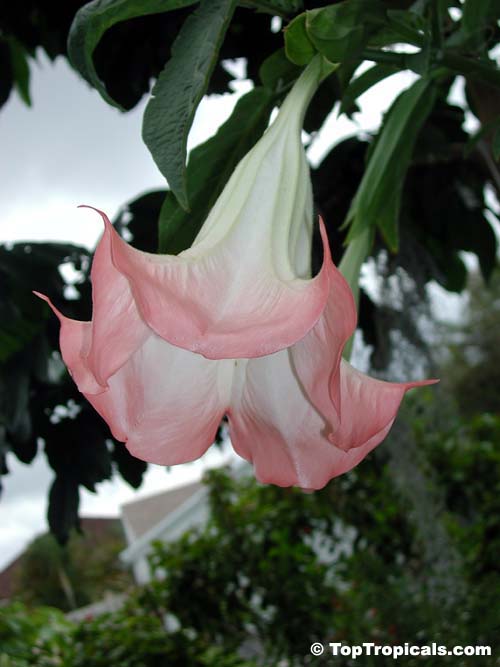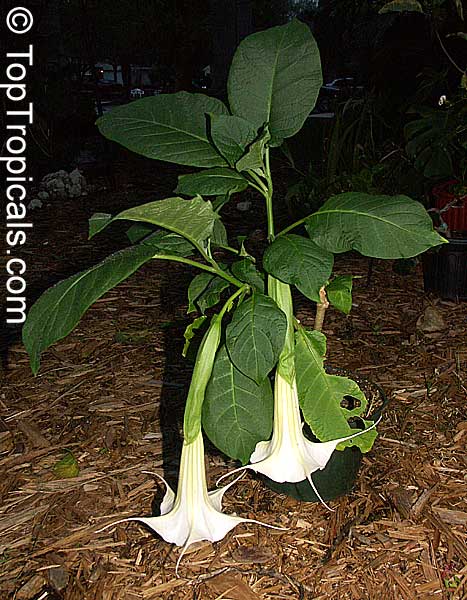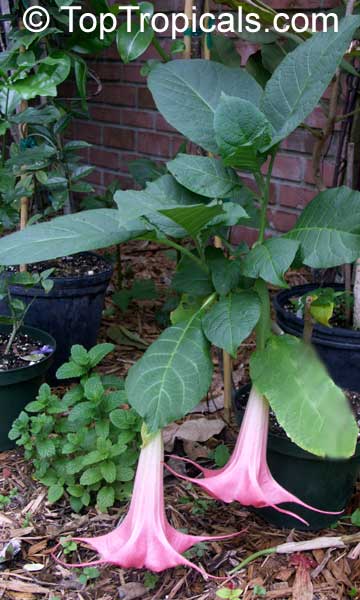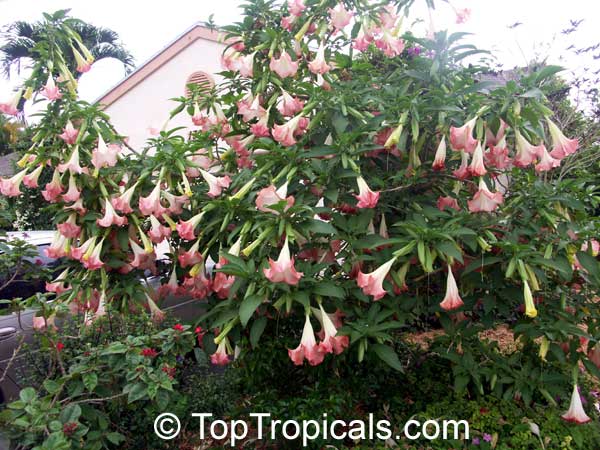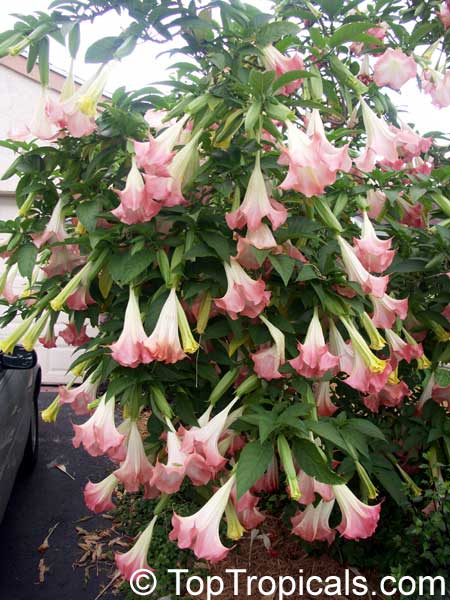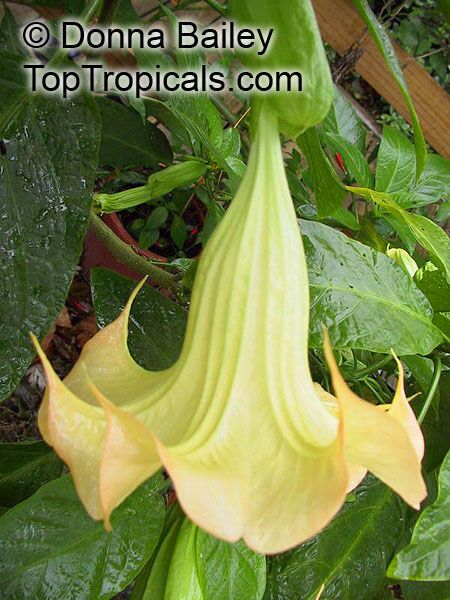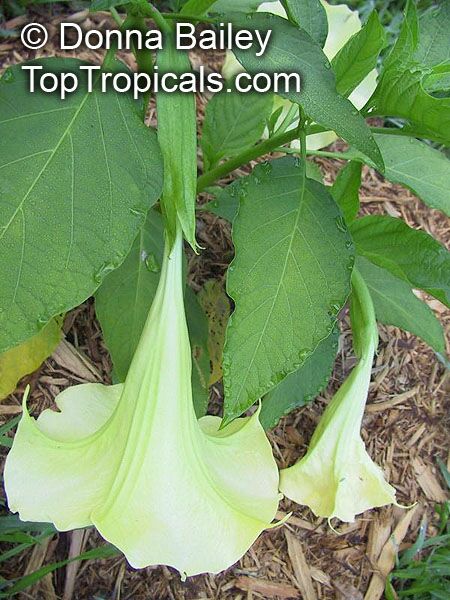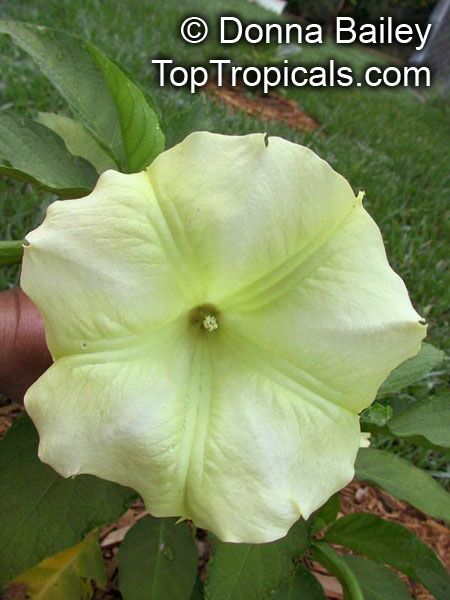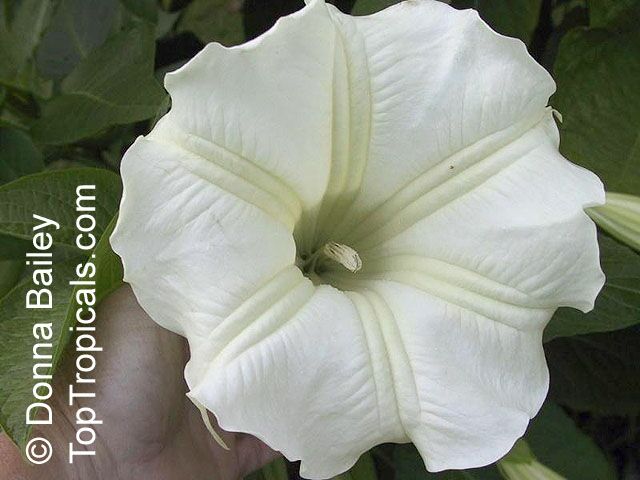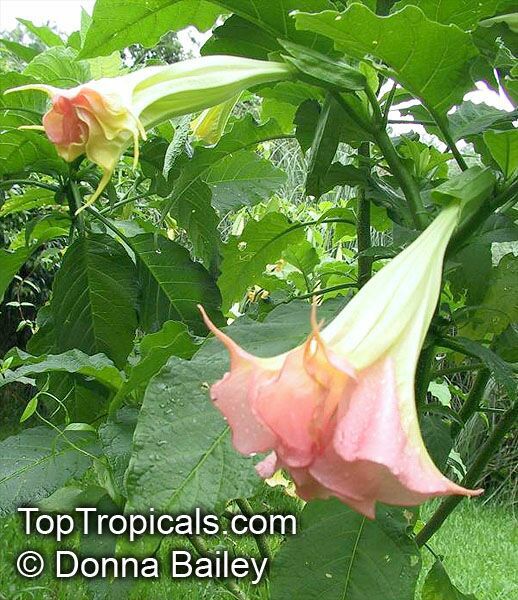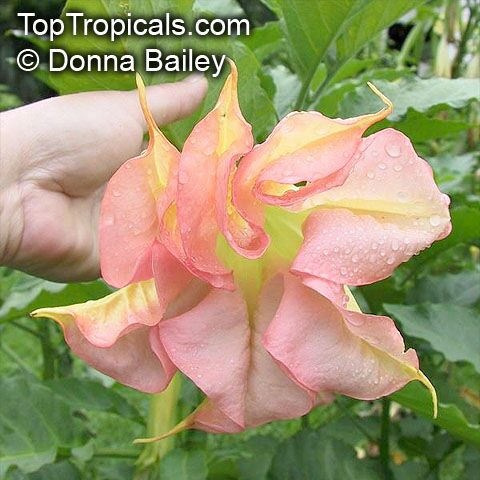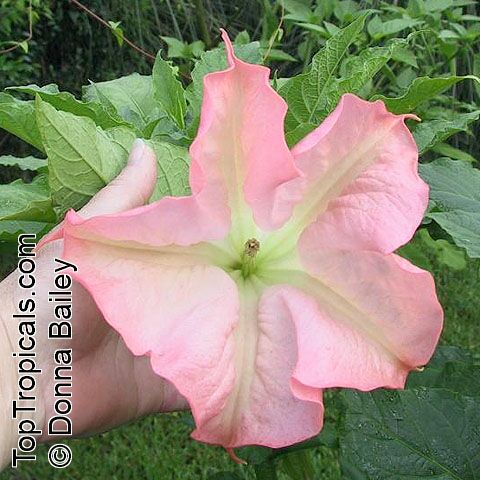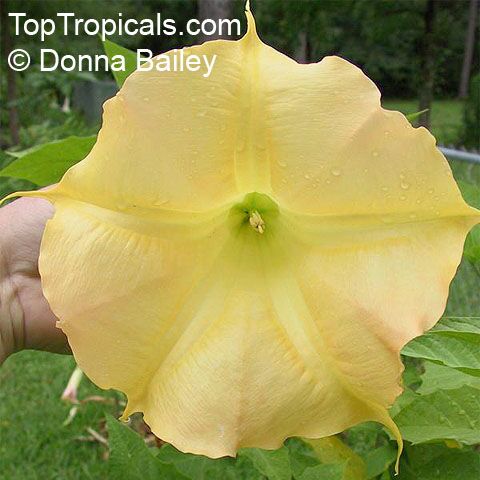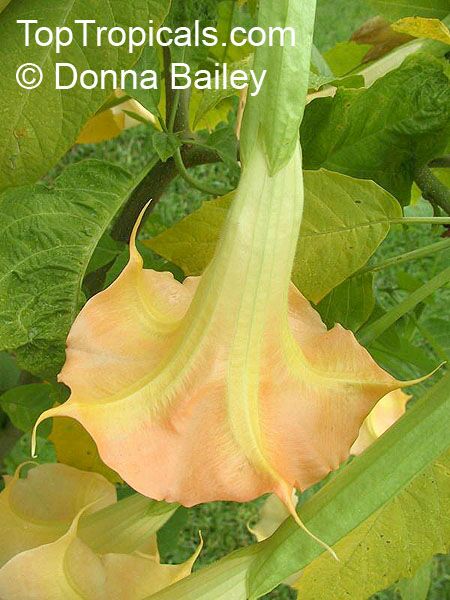Solanaceae - Botanical Family
Top Tropicals Plant Encyclopedia
| Number of plants found: 102 | Next | 
|
Go to page: | 1 | 2 | 3 | 4 | 5 | Last |
Botanical name: Acnistus arborescens
Common names: Hollowheart, Wild Tabbaco
Family: Solanaceae
Origin: Central and South America









Acnistus arborescens is a large shrub native to Central and South America known as Hollowheart. In its natural habitats, it grows in full sun and reaches heights of as high as 10 feet, or as a small tree up to 20 feet in height. It is also known for its abundance of white, off-white, blue, lavender, and purple flowers, as well as for its ability to attract butterflies and hummingbirds.
This plant is best grown in USDA zone 9-11 in well-draining soil and with regular waterings. In warm climates, it can have year-round growth, while cold climates may require bringing the plant indoors in winter or providing frost protection such as an insulating wrap. If planted in a pot, it is recommended to place it in a sheltered location and use a balanced fertilizer on a regular basis. If a cold snap is predicted, the pot should be moved indoors to a sunny location.
Traditionally, Acnistus arborescens has also been used ethnomedically to treat cancer. However, no scientific evidence is available to attest to its efficacy as an herbal remedy.
In conclusion, Acnistus arborescens is an attractive, fast-growing shrub or small tree that is easy to care for and provides a splash of color to attract hummingbirds and butterflies. While it can have ethnomedical advantages, more research is needed to verify the claims of its healing properties.
Botanical name: Anthocercis littorea
Common name: Yellow Tailflower
Family: Solanaceae
Origin: Australia







Botanical names: Brugmansia arborea, Datura arborea
Common names: Angels Trumpet, Tree Datura
Family: Solanaceae
Origin: Ecuador









Brugmansia arborea are closely related to the Datura Candida, but grows much larger--up to 25 feet. Hence the common name - Tree Datura.
Covered with huge, hanging, trumpet-like flowers.
Brugmansia arborea is a very robust and somewhat drought tolerant variety. Green, velvety, trumpet-shaped leaves and beautiful creamy white fragrant flowers are produced continually.
Botanical names: Brugmansia sanguinea, Datura sanguinea
Common names: Red Angels Trumpet, Red Datura, Eagle Tree
Family: Solanaceae
Origin: South America












High elevation species with striking red and yellow flowers that attract enthusiastic hummingbirds. Known extensively throughout South America for its medicinal virtues and ritually brewed with Trichocereous Pachanoi as one interpretation of Cimora. In Ecuador it is currently being cultivated for scopolamine. Easy to grow from seed. Distinguished from all others by the red flowers. Rare, cuttings are almost impossible to get. Prefers cool areas. Belonging to the Deadly Nightshade family, which also includes the tomato, Brugmansia comprises about 20 different species, nearly all of them poisonous. There are a number of cultivars, some with pink or yellow flowers. It's a showy landscape evergreen plant. The more sun, the more flowers. Can be pruned into a nice small accent tree. Put it where you can enjoy the fragrance at night. Blooms on and off all year. Easy to grow. Not fussy about soil or water. Likes lots of fertilizer.
Botanical name: Brugmansia sp.
Common name: Angels Trumpet
Family: Solanaceae
Origin: South America
Hardiness: 20°F














Botanical name: Brugmansia sp.
Common name: Angels Trumpet
Cultivar: Peach
Family: Solanaceae













Beautiful new variety with flowers changing color from white through yellow to peach, with very long trumpets. Hardy to zone 7, these plants are also easy to keep in large pots and bring into the house for the winter. However, they require regular, heavy feeding to consistently produce the showy, trumpet shaped, pendant flowers. Temperature and growing conditions can cause great variation in the size and color of the flowers. You may see different color flowers on the same plant as well. See Brugmansia Page
Recommended Fertilizer: SUNSHINE Megaflor - Bloom Nutrition Booster
Botanical name: Brugmansia sp.
Common name: Angels Trumpet
Cultivar: Pink
Family: Solanaceae











Many pink cultivars are considered as tri-color, since the bud can be white, then turns yellow, and opens as pink. It's a showy landscape evergreen plant. The more sun, the more flowers. Can be pruned into a nice small accent tree. Put it where you can enjoy the fragrance at night. Blooms on and off all year. Easy to grow. Not fussy about soil or water. Likes lots of fertilizer. Brugmansia Page here.
Botanical name: Brugmansia sp.
Common name: Angels Trumpet
Cultivar: White
Family: Solanaceae









It's a showy landscape evergreen plant. The more sun, the more flowers. Can be pruned into a nice small accent tree. Put it where you can enjoy the fragrance at night. Blooms on and off all year. Easy to grow. Not fussy about soil or water. Likes lots of fertilizer. Brugmansia Page here.
Botanical name: Brugmansia sp.
Common name: Angels Trumpet
Cultivar: Yellow
Family: Solanaceae
Origin: Ecuador









It is one of the most fragrant brugmansias. Yellow to deep orange flowers with a lighter throat. Color depends on climatic conditions. One of the best Brugmansia hybrids, the Charles Grimaldi variety is a fast grower and heavy bloomer. The flowers start out yellow and change to a beautiful orange. This plant is one of the smaller varieties and is well suited for being in a pot. Belonging to the Deadly Nightshade family, which also includes the tomato, Brugmansia comprises about 20 different species, nearly all of them poisonous. There are a number of cultivars, some orange or yellow flowers. It's a showy landscape evergreen plant. The more sun, the more flowers. Can be pruned into a nice small accent tree. Put it where you can enjoy the fragrance at night. Blooms on and off all year. Easy to grow. Not fussy about soil or water. Likes lots of fertilizer. Brugmansia Page here.
Botanical name: Brugmansia suaveolens
Common name: Angel's trumpet
Family: Solanaceae
Origin: Central and South America












Brugmansia suaveolens, commonly known as Angel Trumpet, is a name widely used in horticulture for both pure species and hybrids derived from it. These plants are prized for their large, pendulous, trumpet-shaped flowers in shades of white, cream, pink, or apricot, often with a strong evening fragrance. Flowering can occur year-round in warm climates, with peak blooms in late summer to autumn.
In cultivation, B. suaveolens and its hybrids prefer full sun to light shade, fertile and well-drained soil, and regular watering during active growth. They are typically grown in USDA Zones 9 11, where they can reach small-tree size, but can also be kept in large containers in cooler climates and overwintered indoors. Regular feeding during the growing season promotes abundant blooms. All parts of the plant are toxic if ingested, and handling may cause skin irritation, so care is advised. Brugmansia Page here.
Recommended Fertilizer: SUNSHINE Megaflor - Bloom Nutrition Booster
| Next |  |
Use link to repeat this search:
https://toptropicals.com/cgi-bin/garden_catalog/cat.cgi?search_op=and&keyword_op=and&language=e&family=Solanaceae&number=10
&no_change_lang=1&user=tt&sale=1&first=0
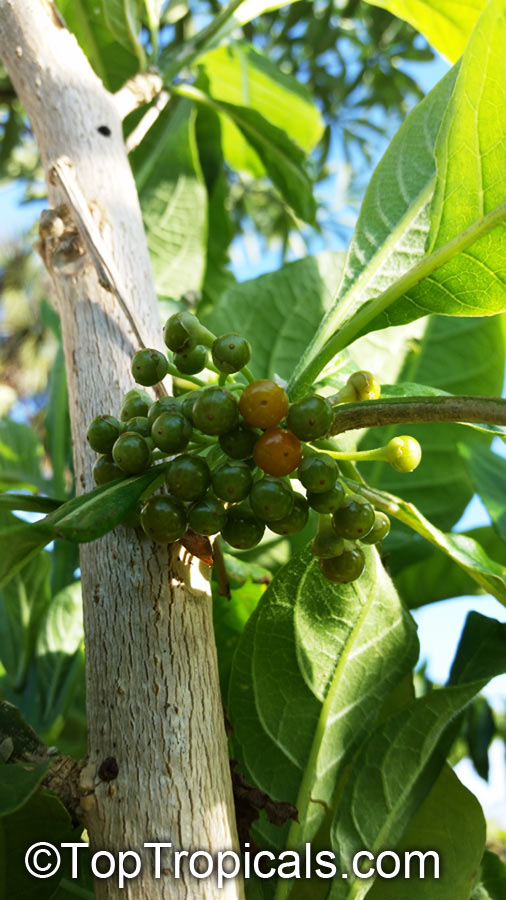
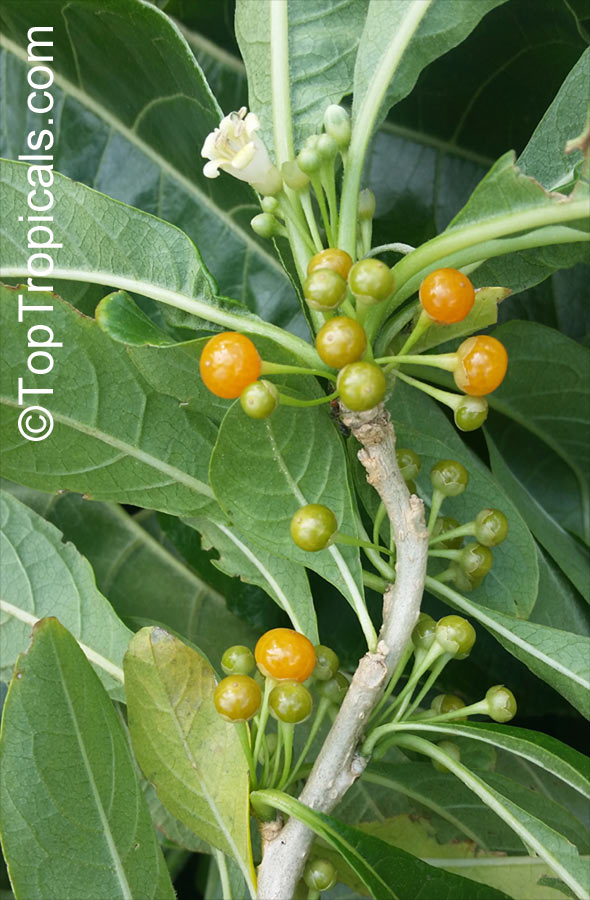
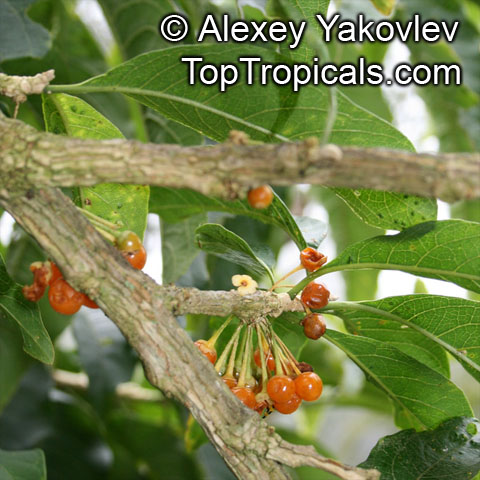
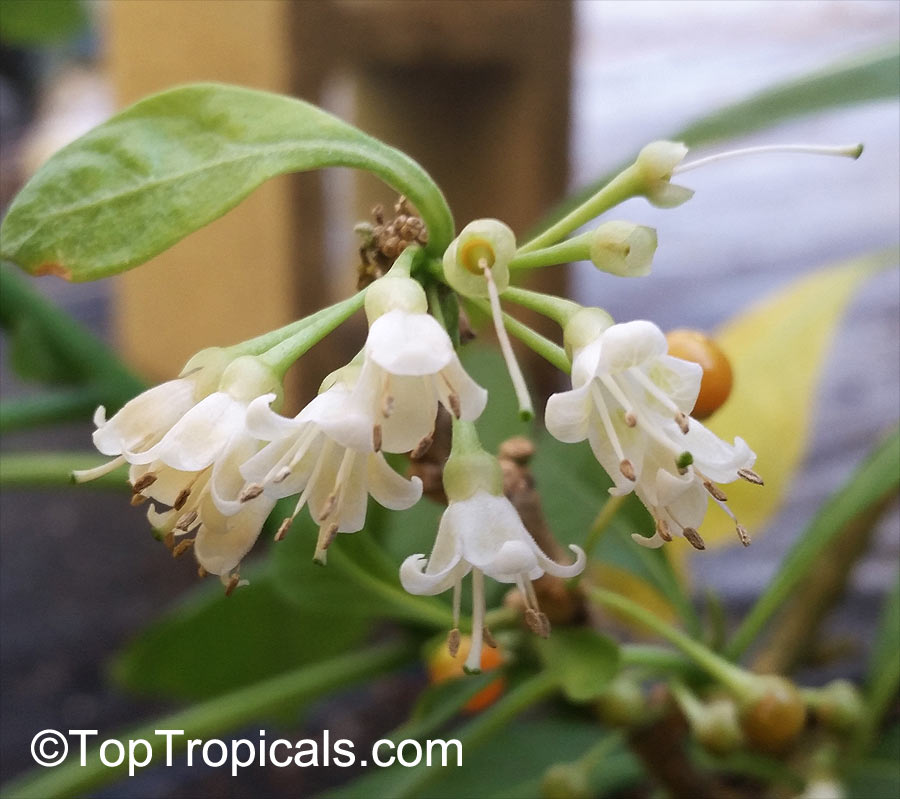
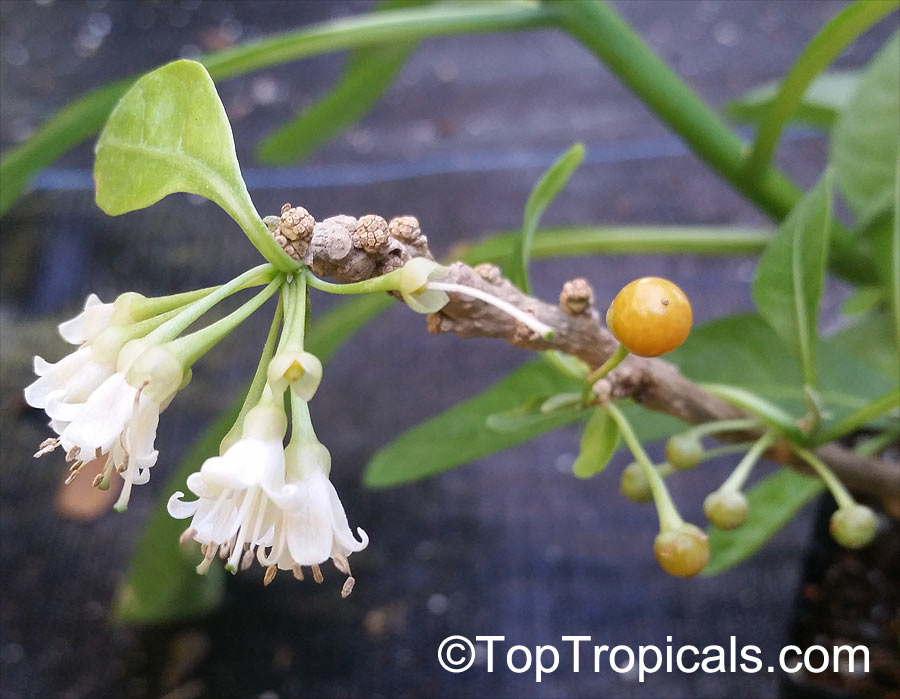
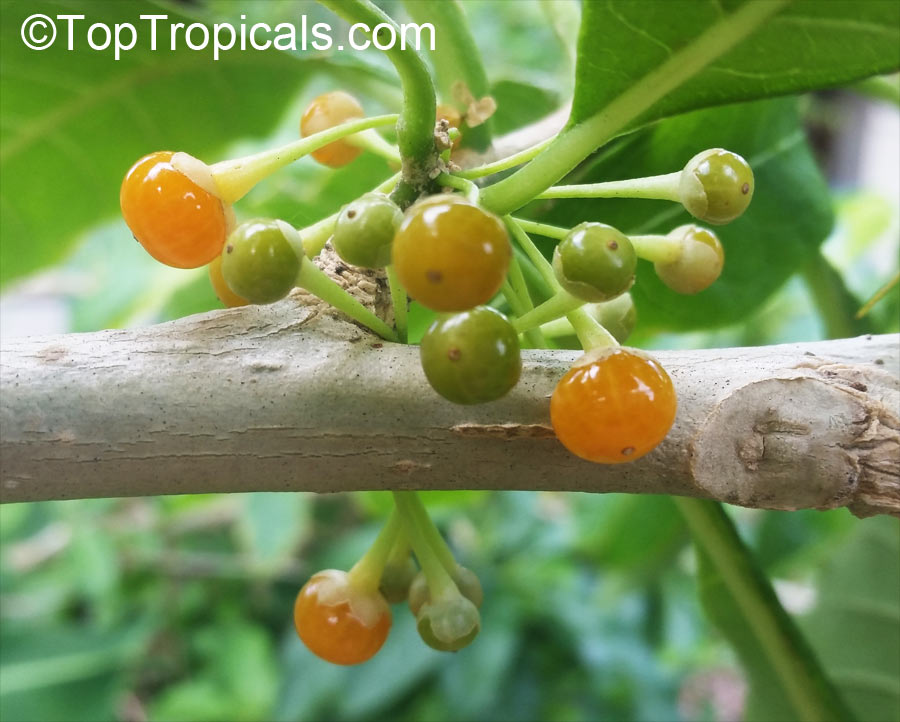

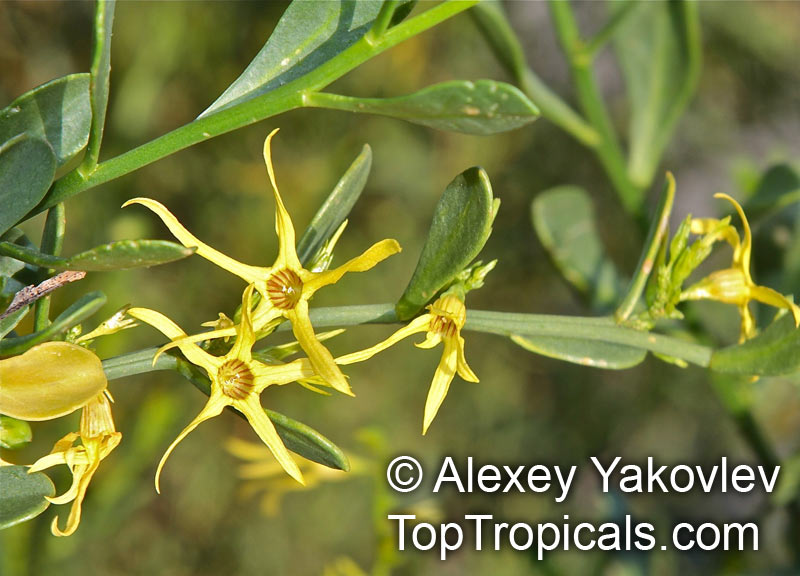
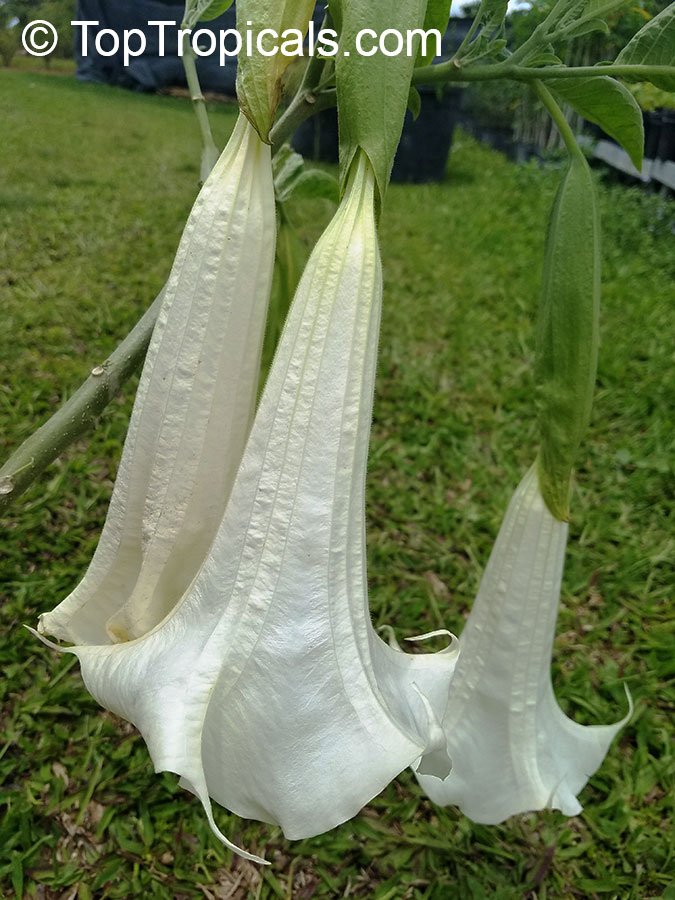
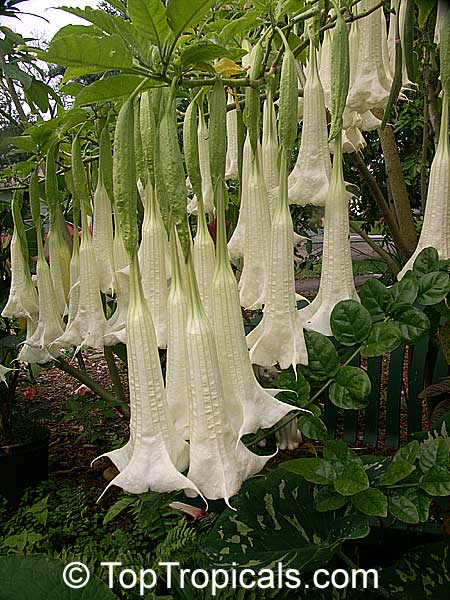
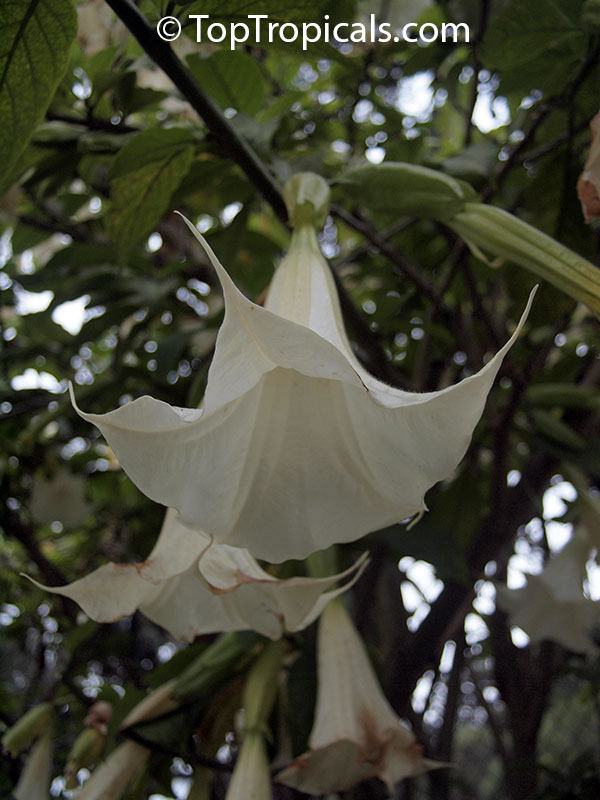

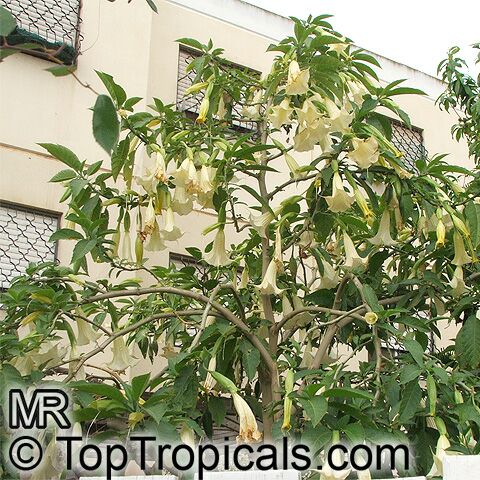
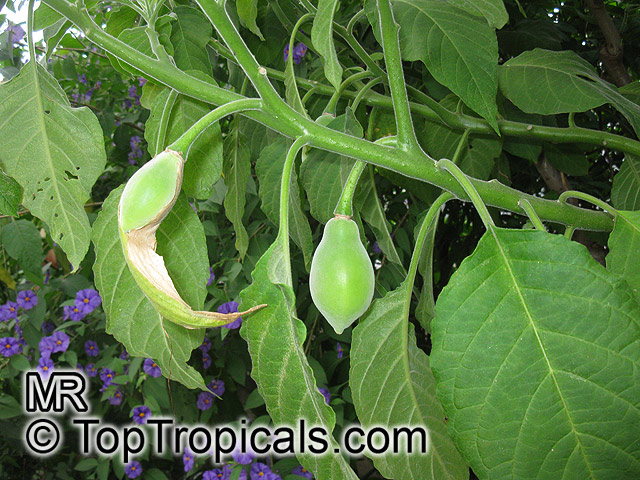
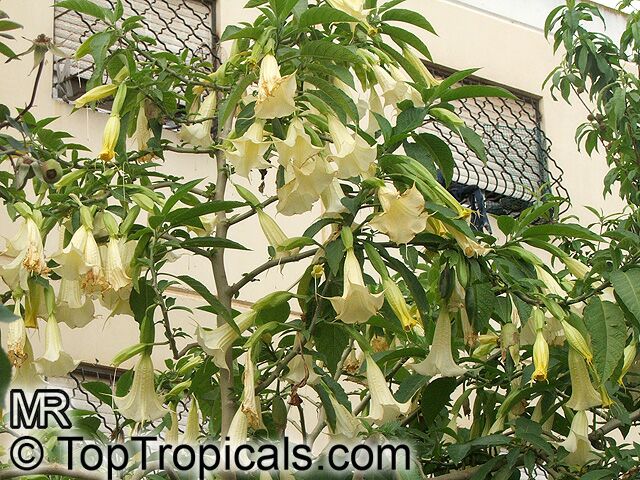

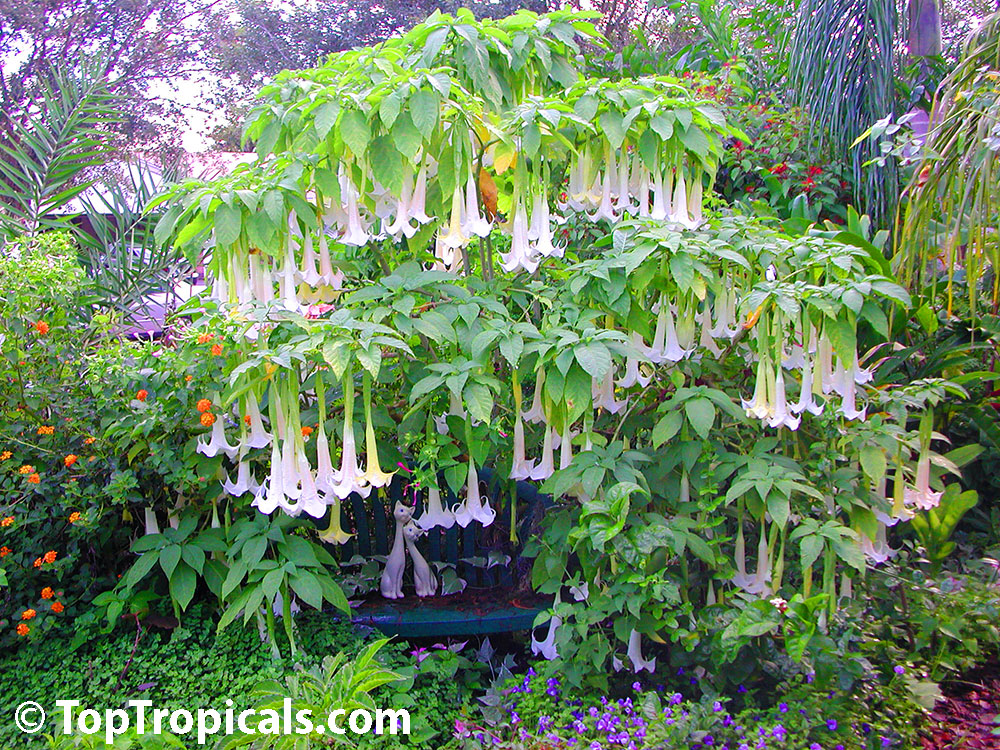
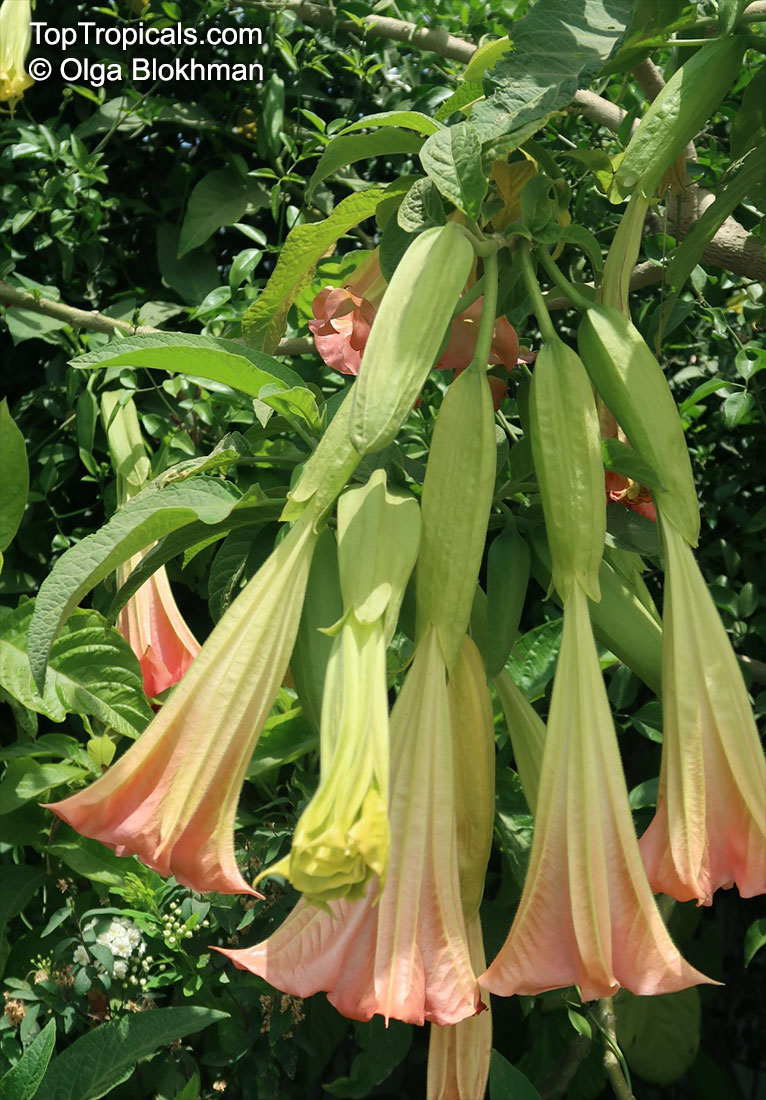
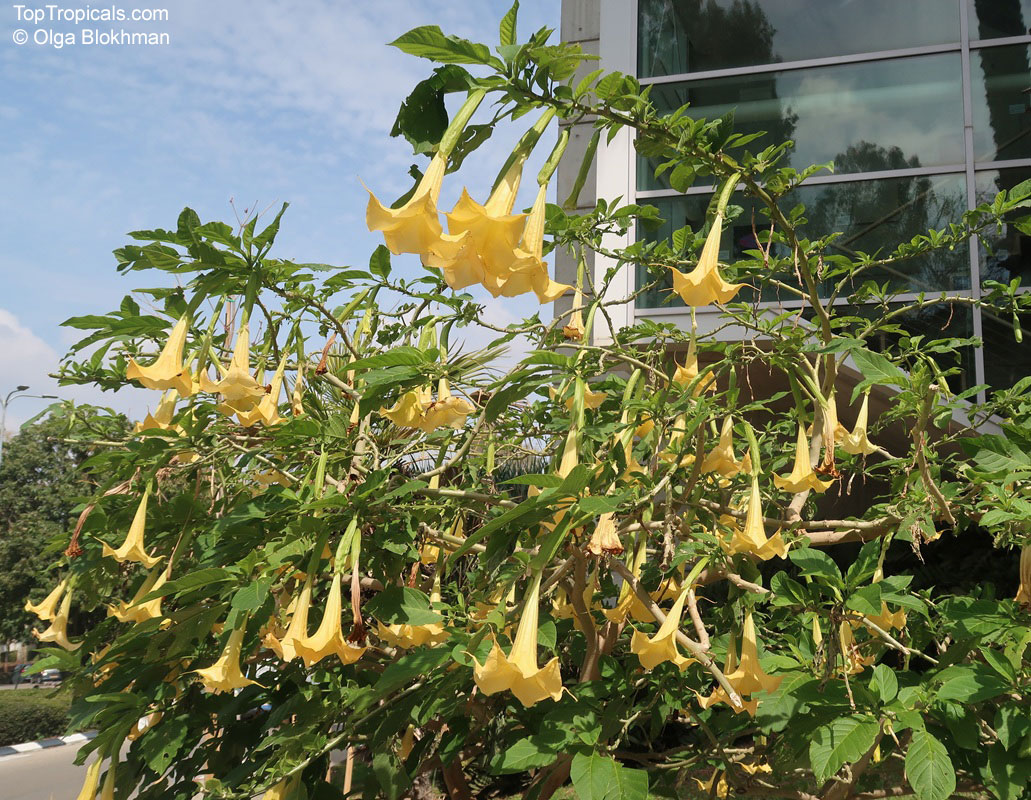

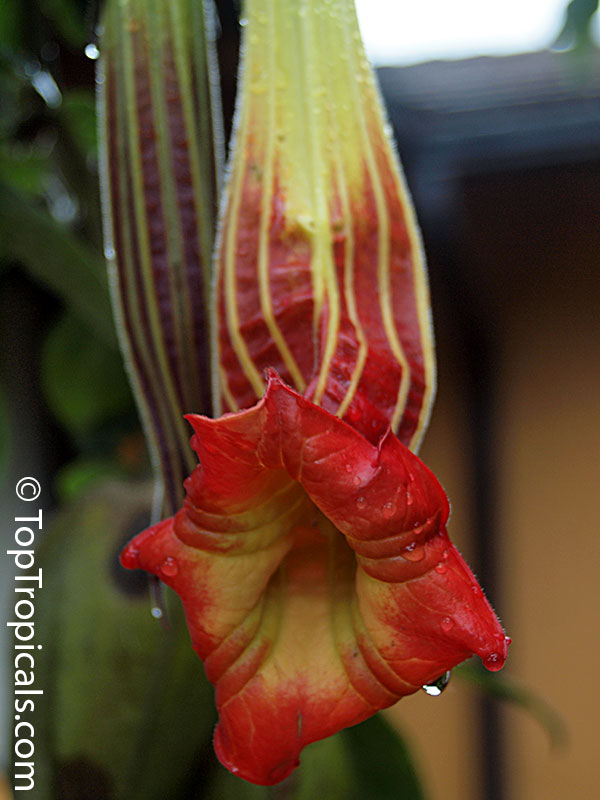
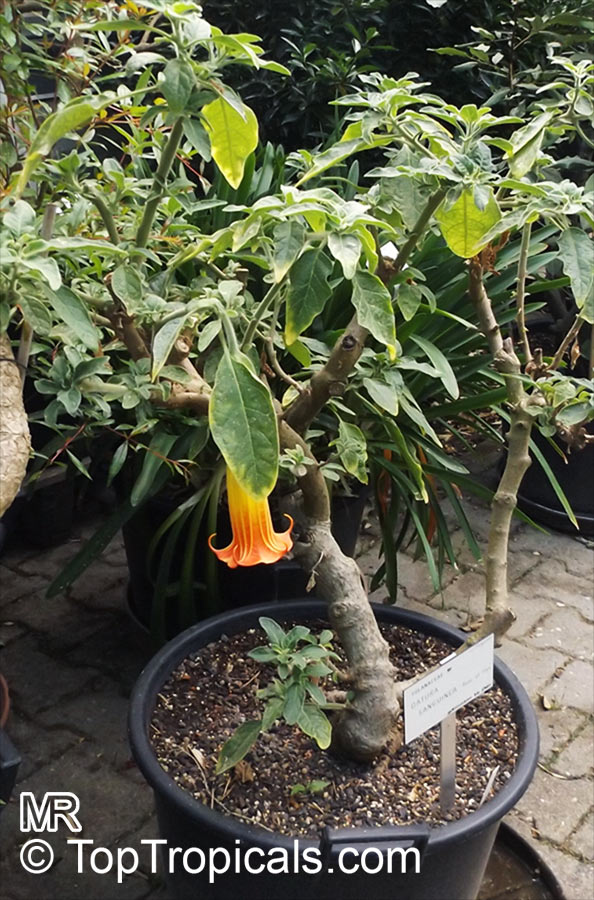
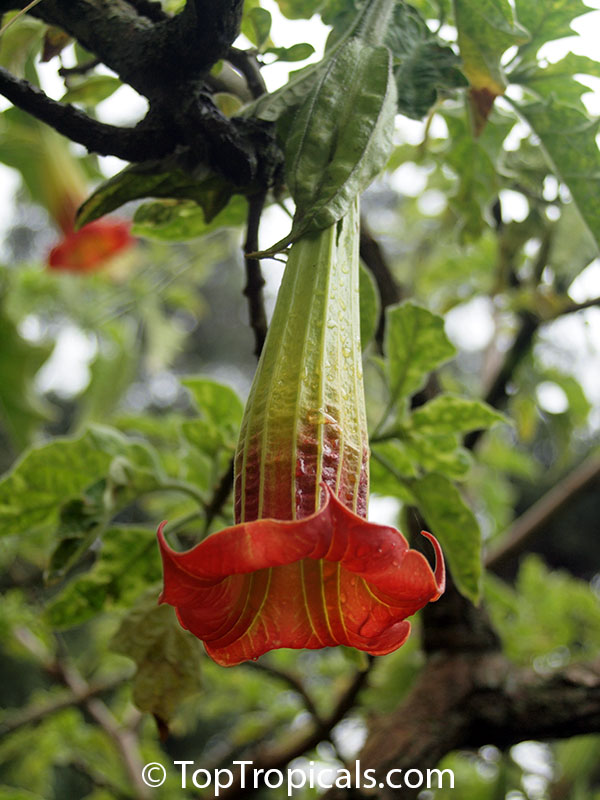
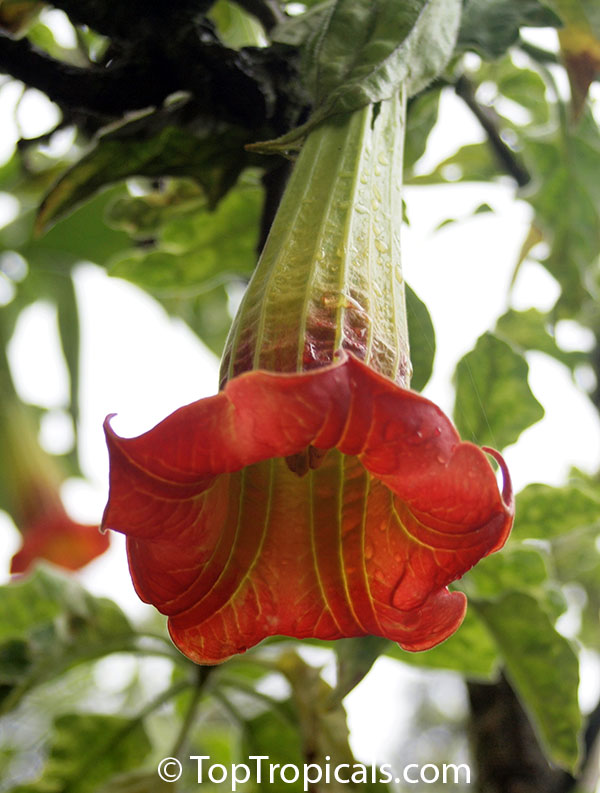
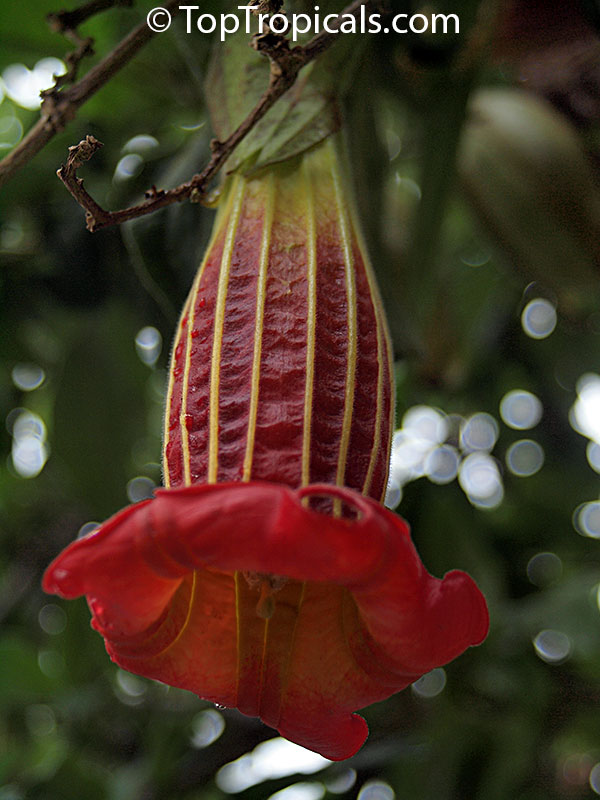
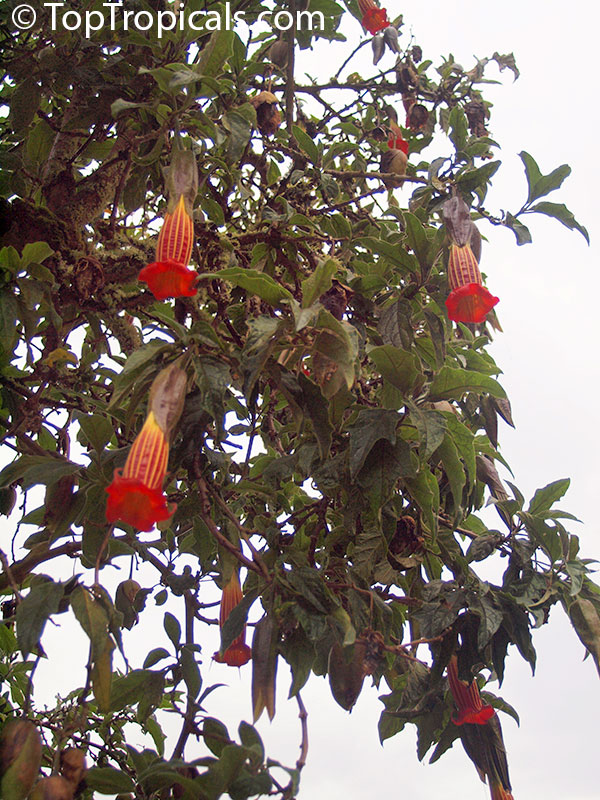
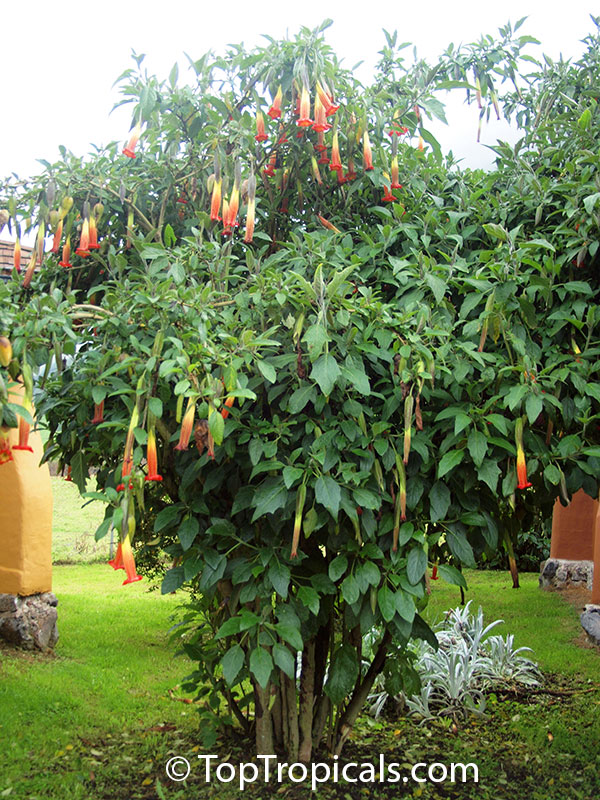
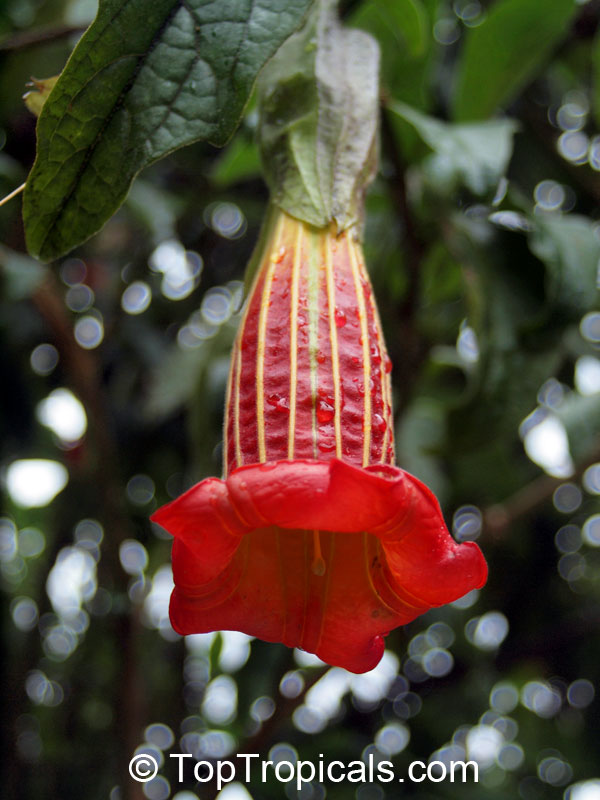
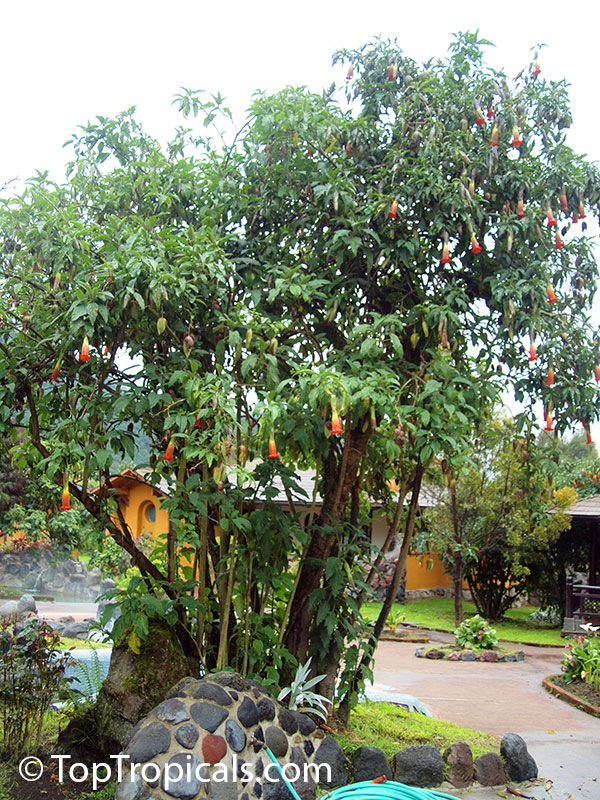
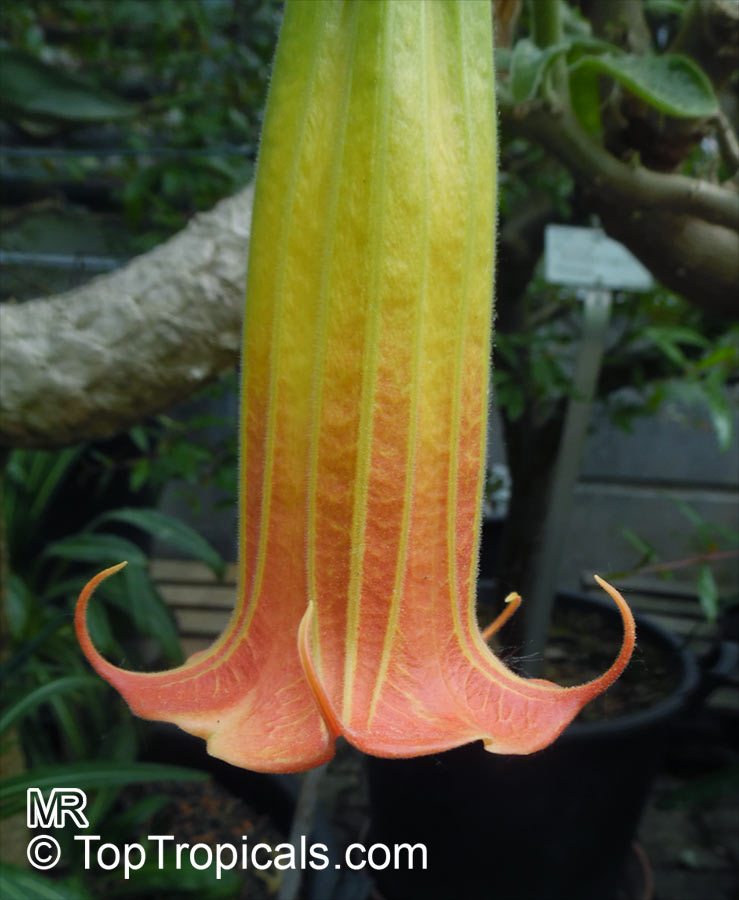
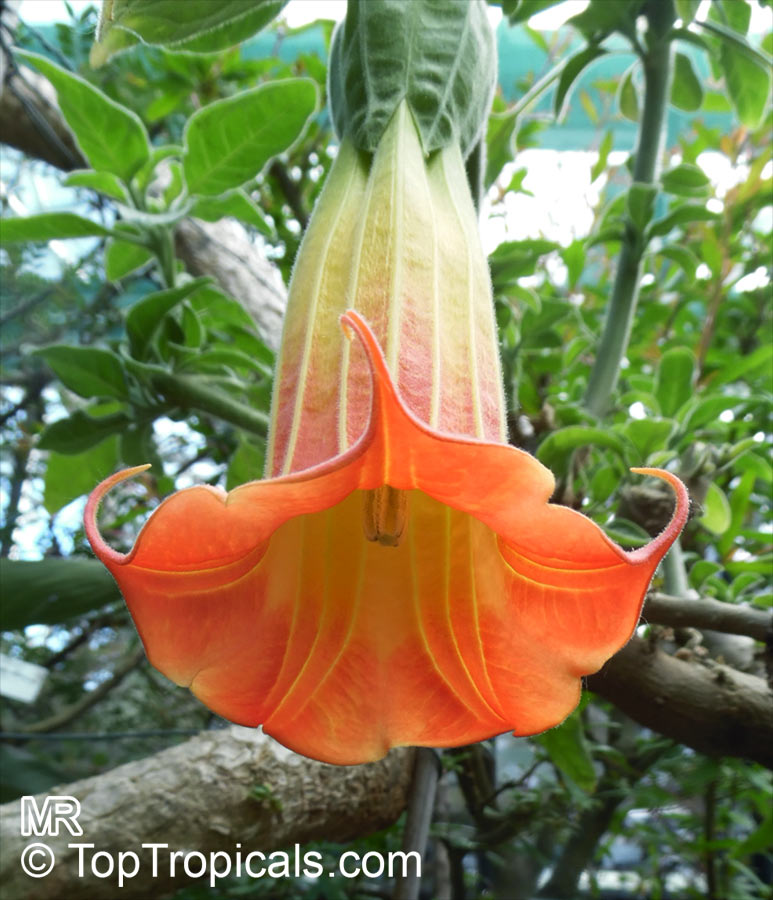
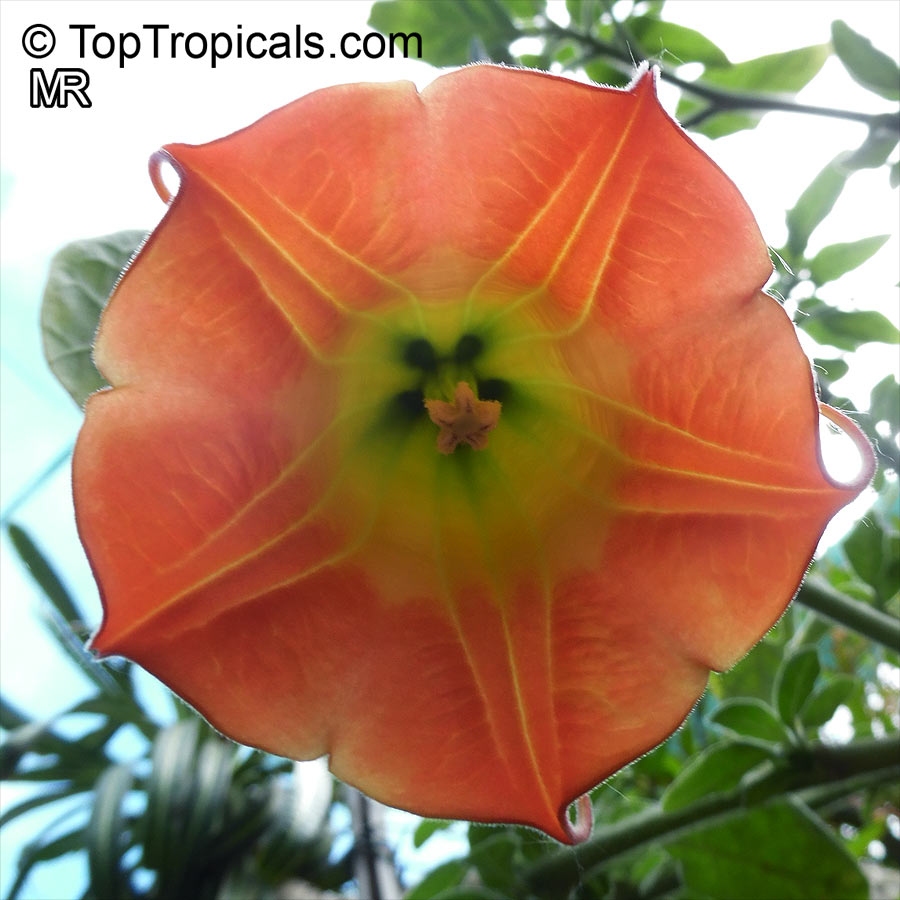
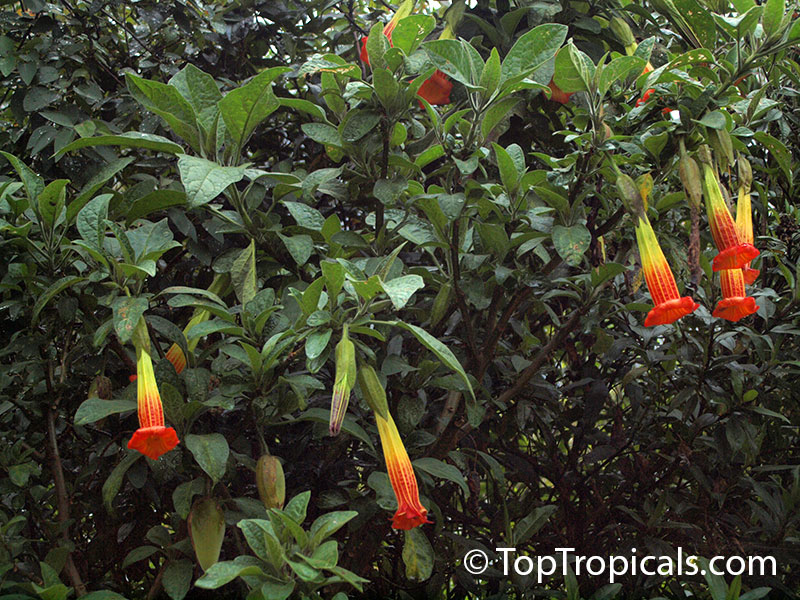
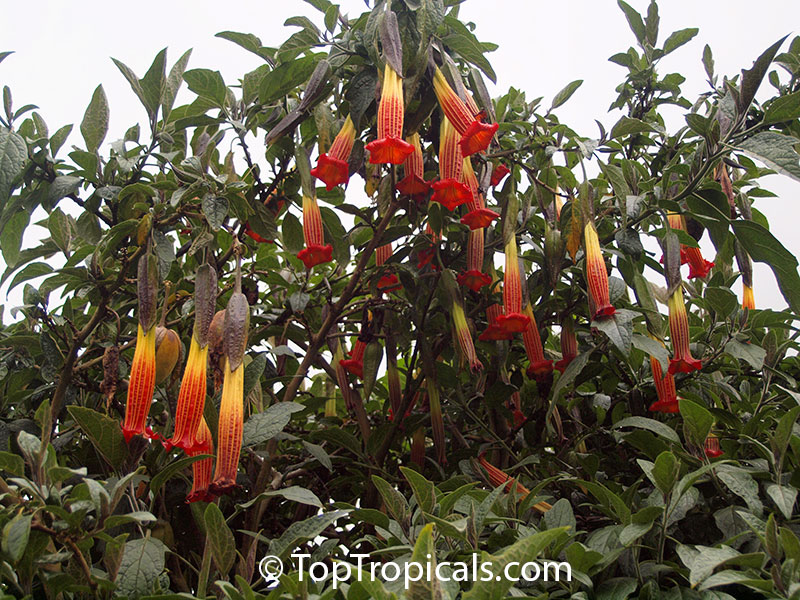
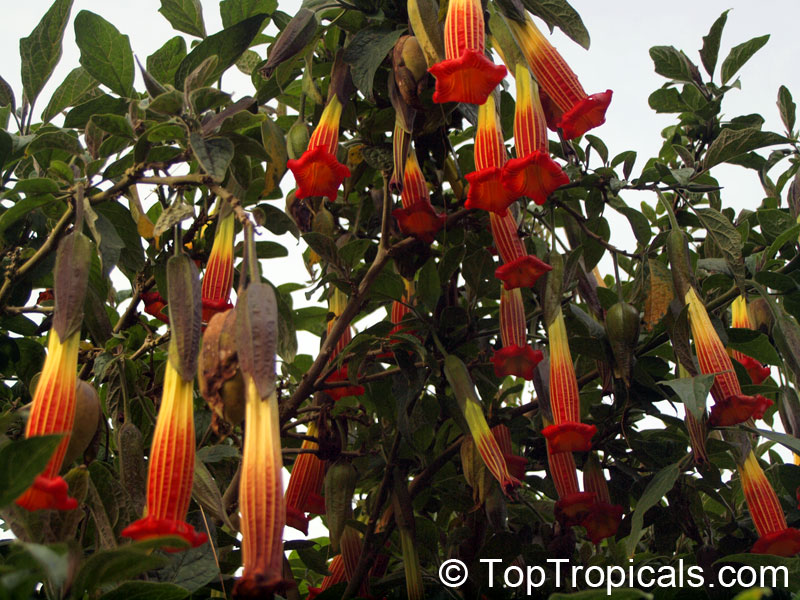
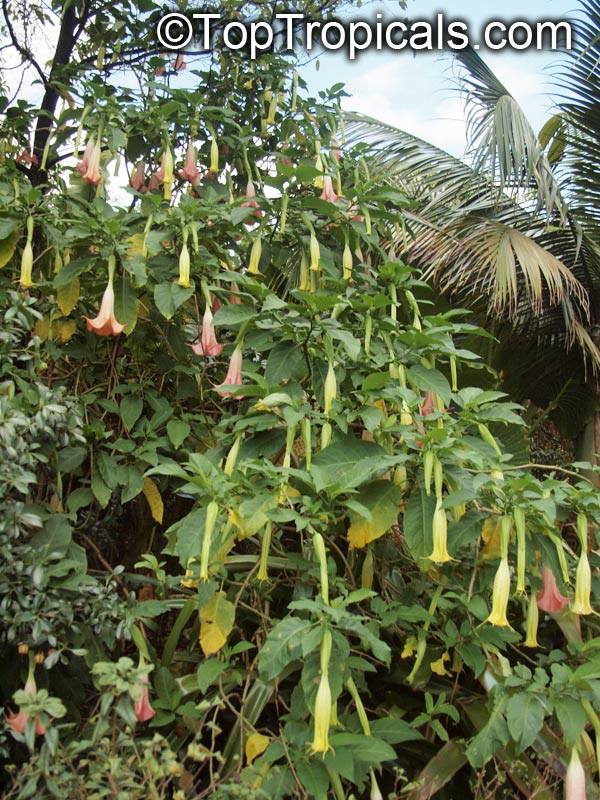
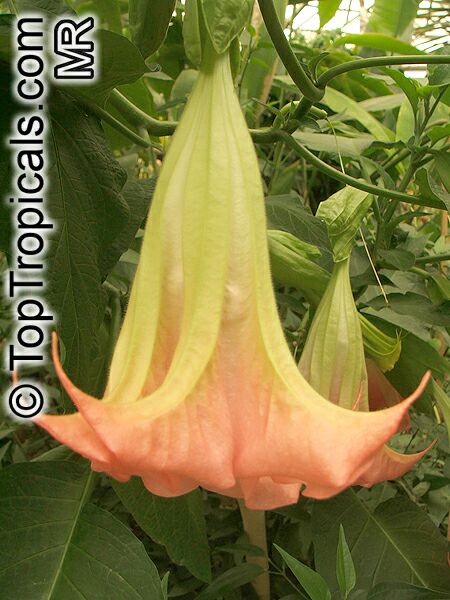
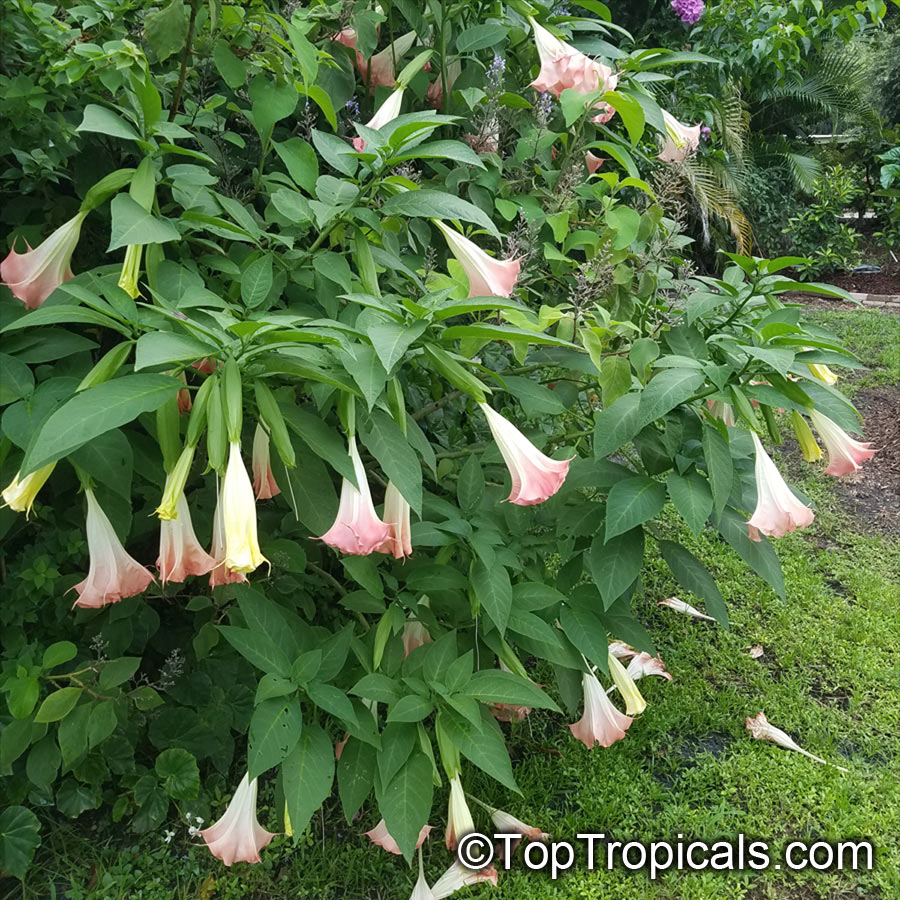
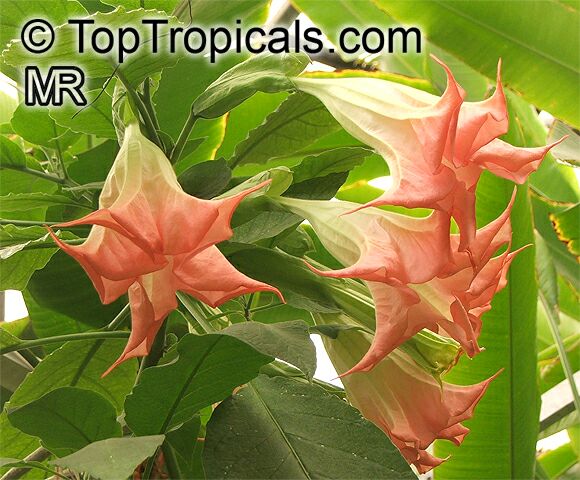
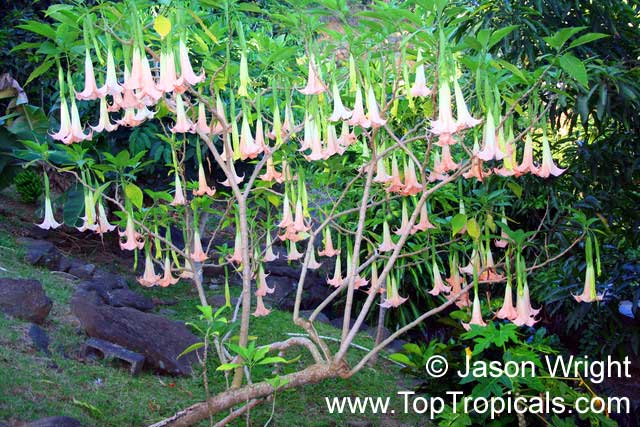
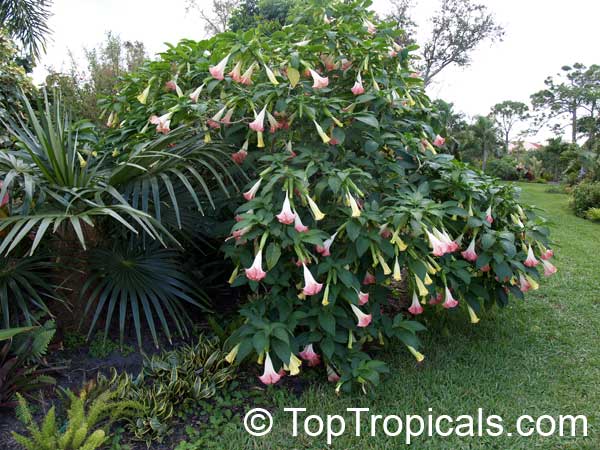

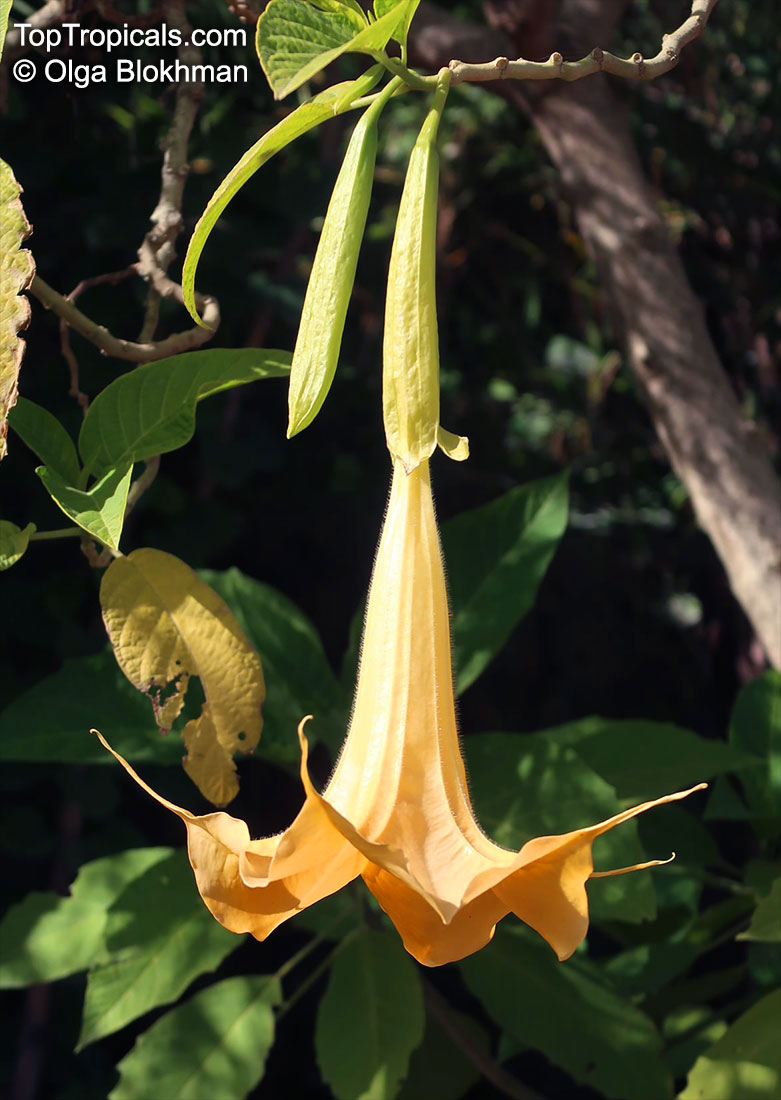
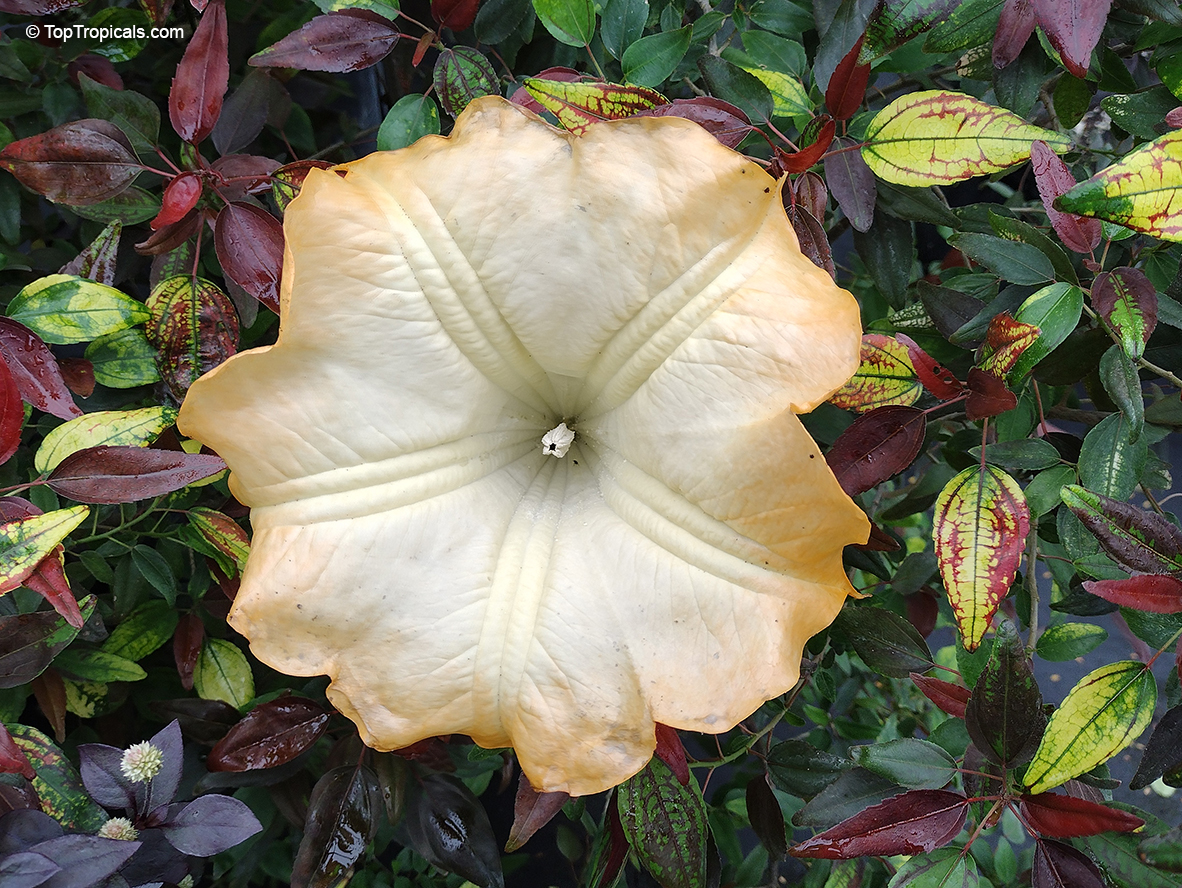
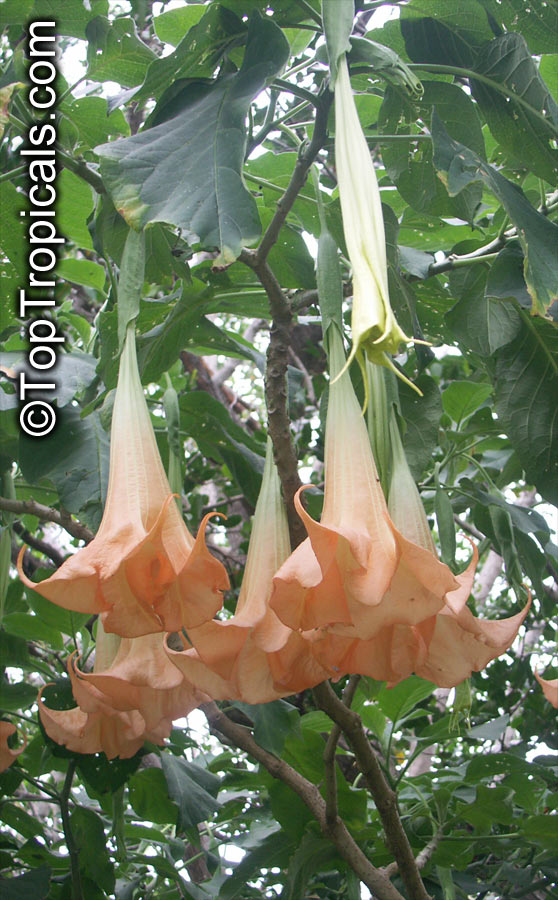
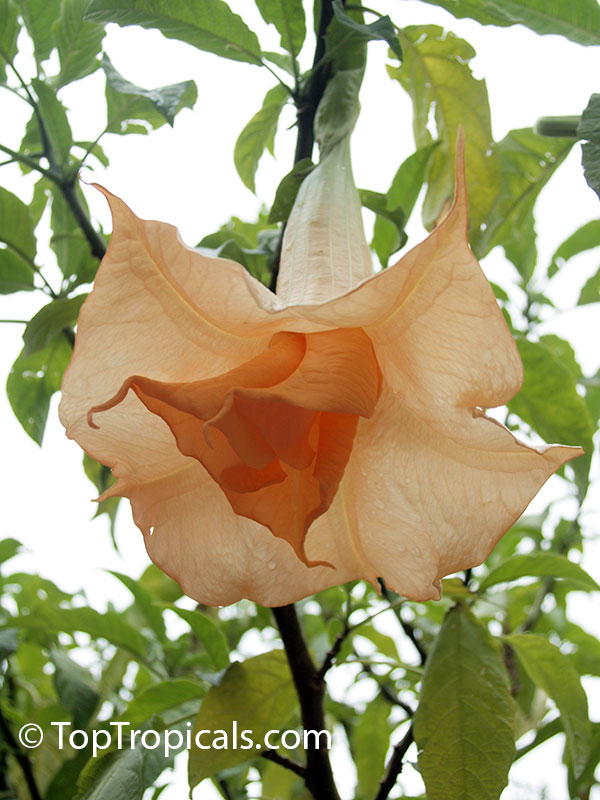
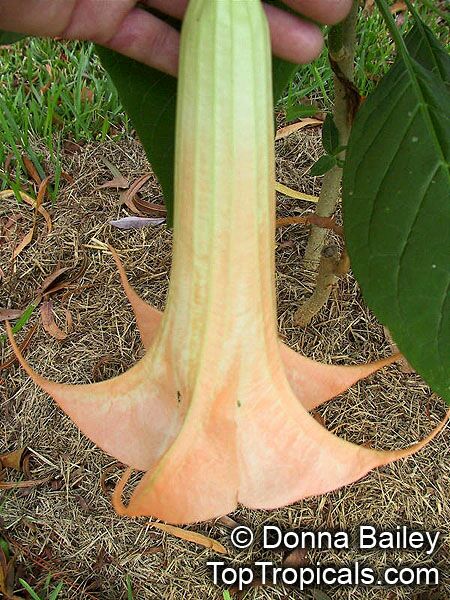
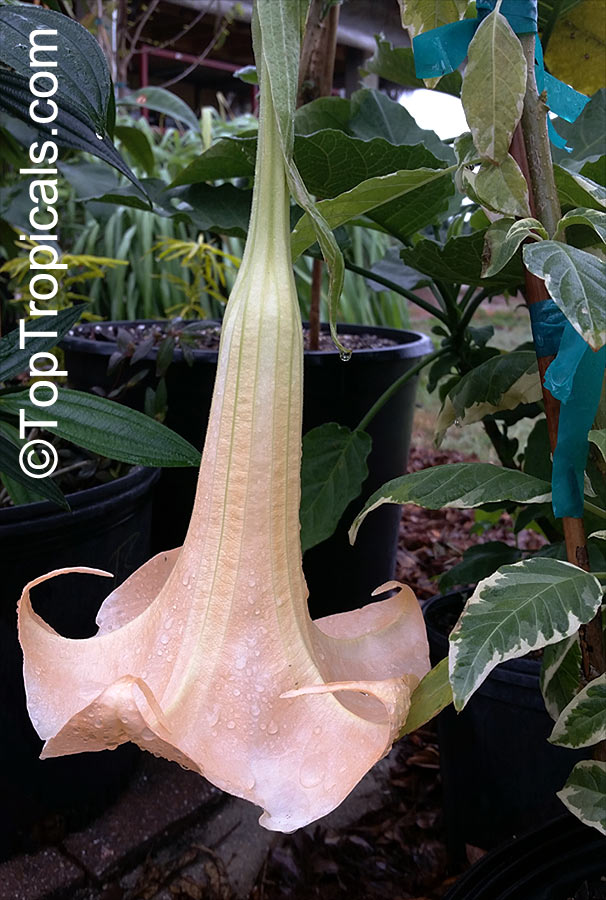

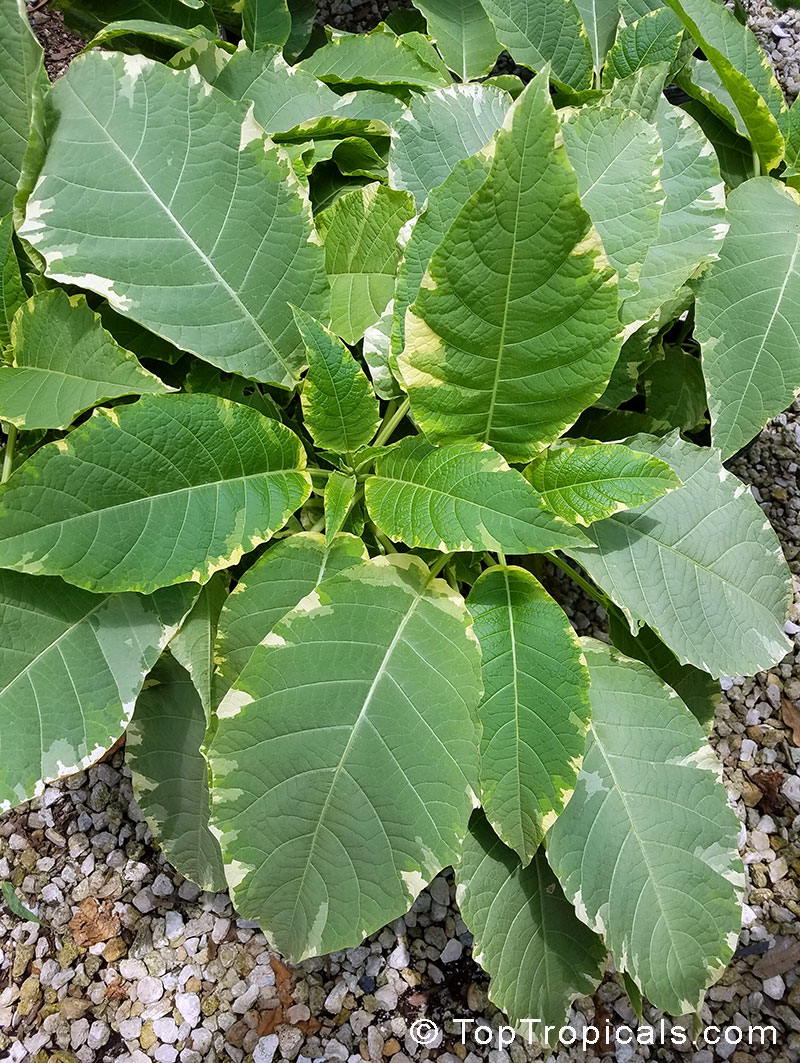
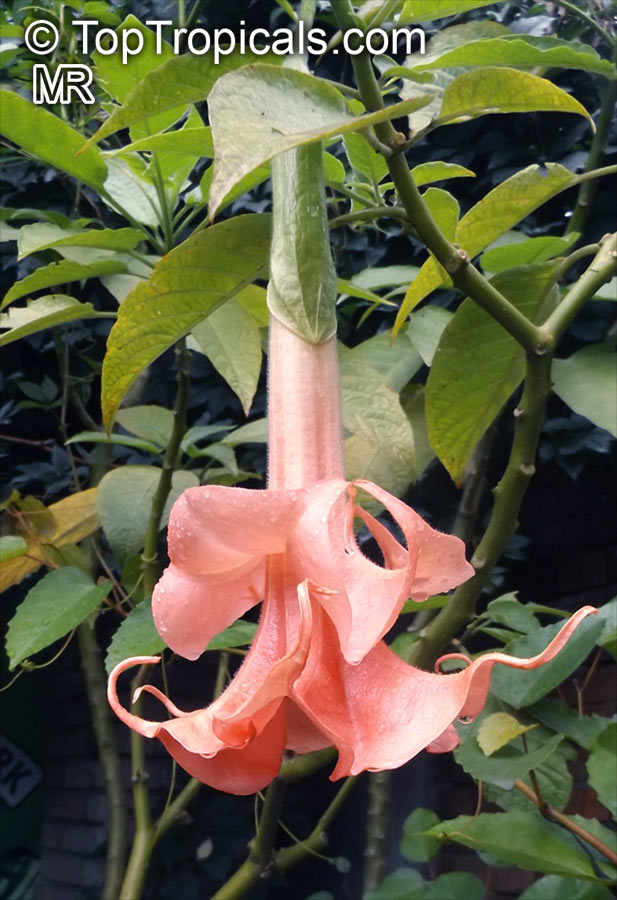
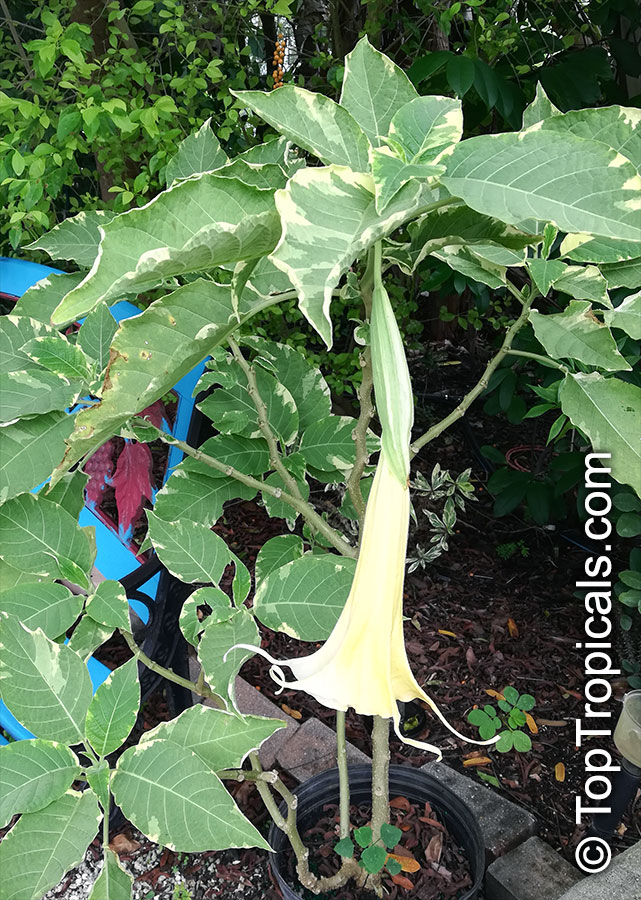

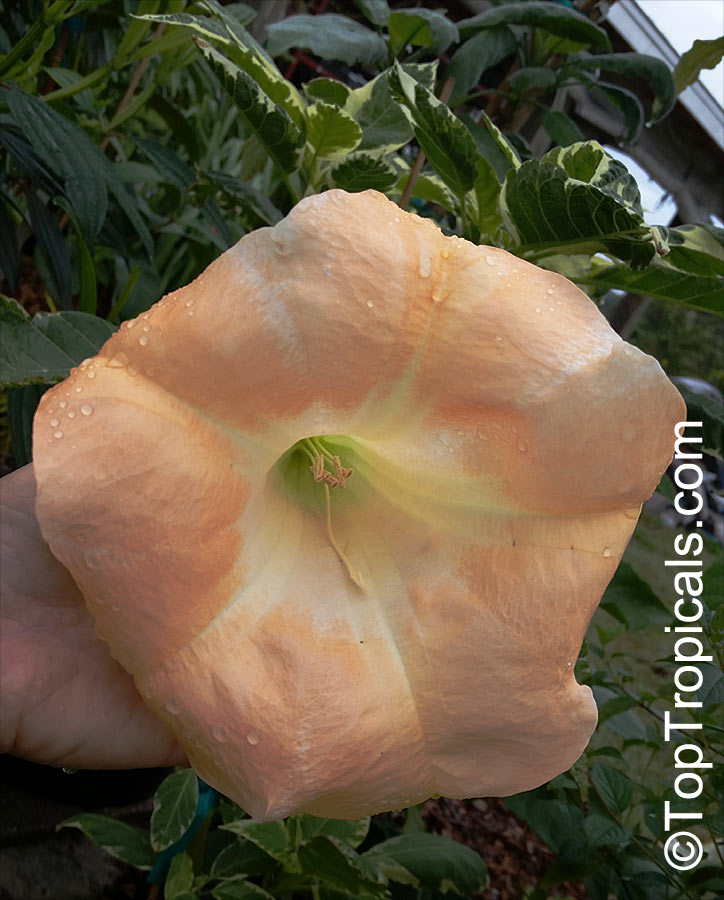
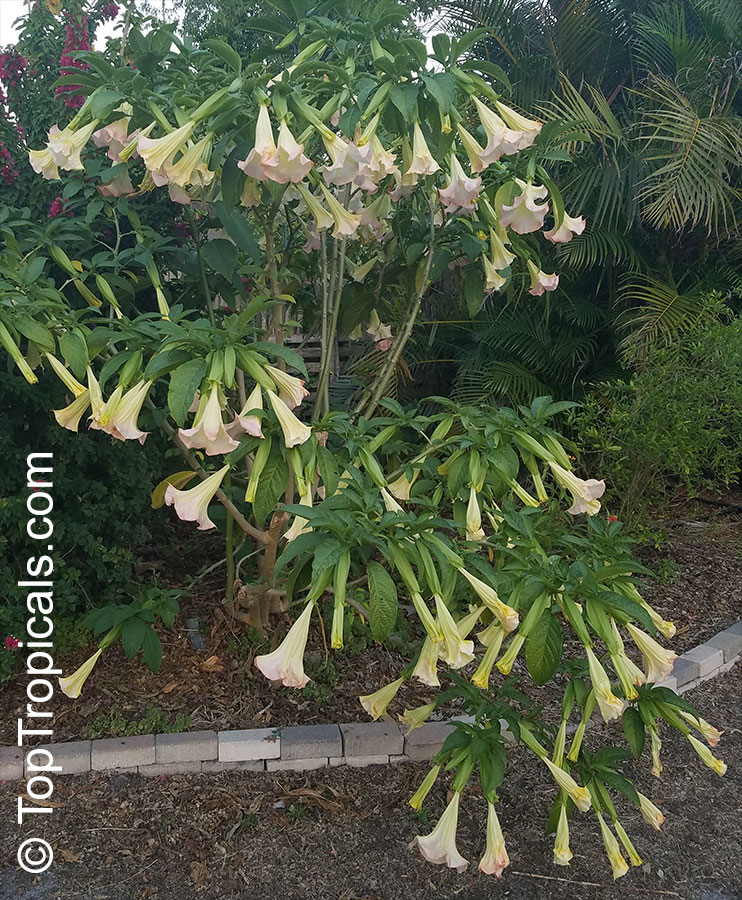
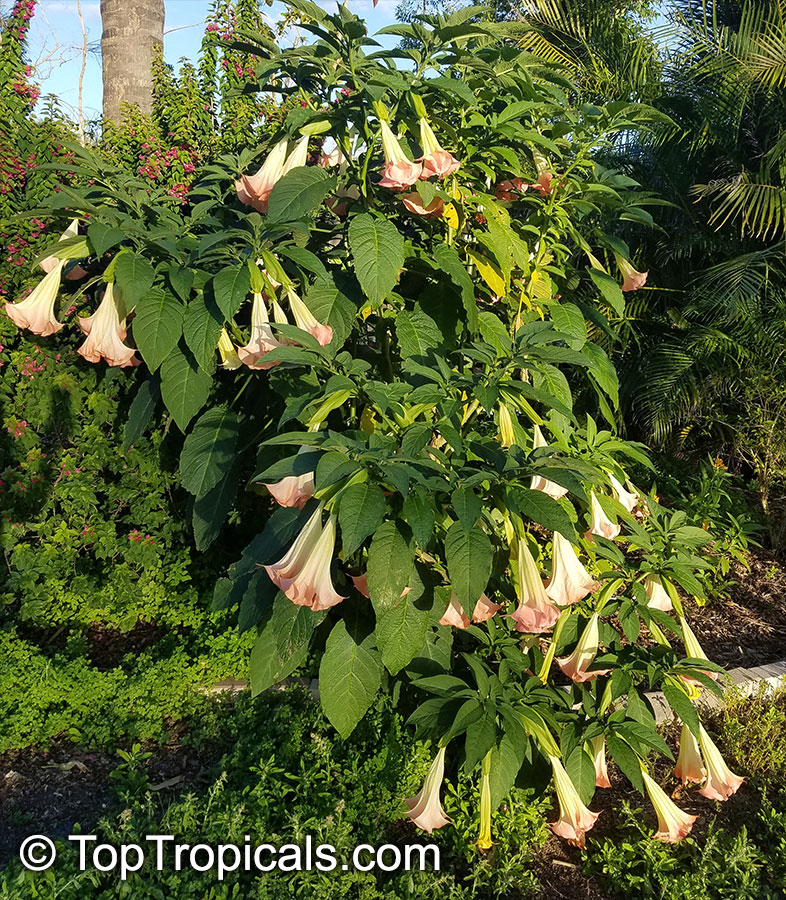
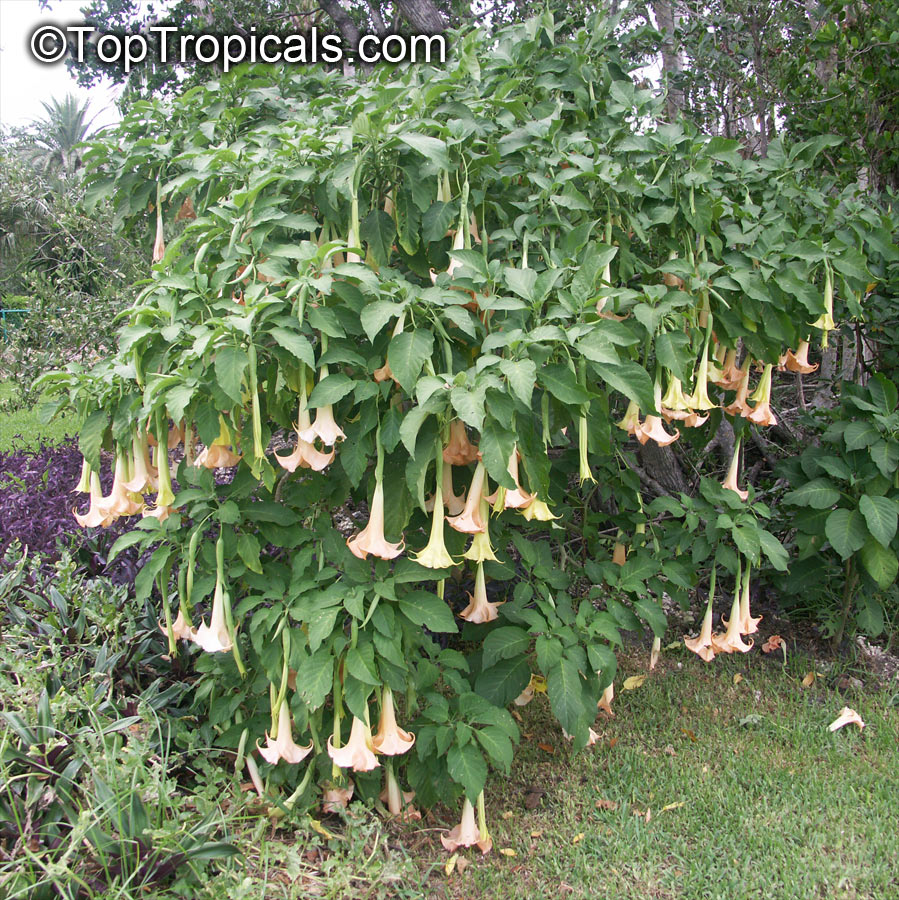
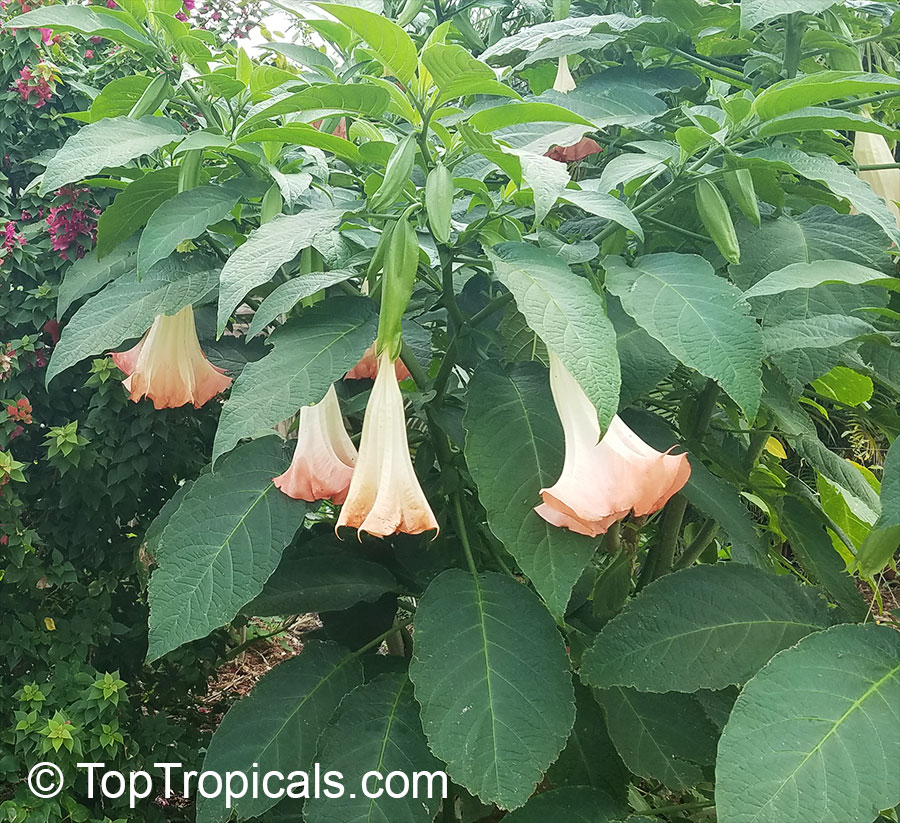
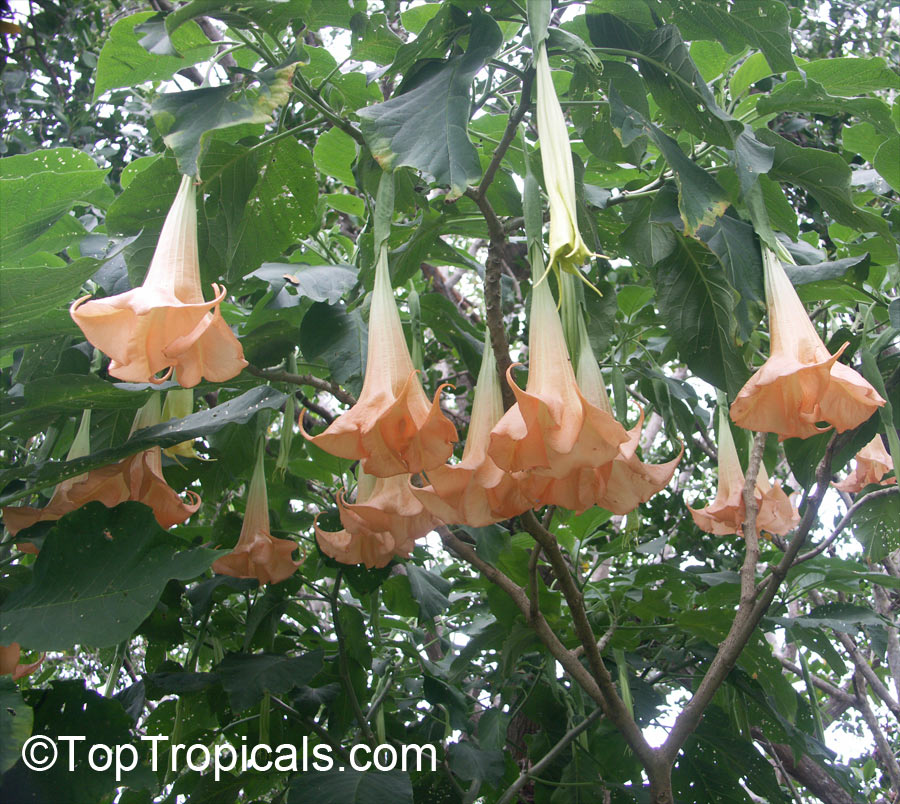
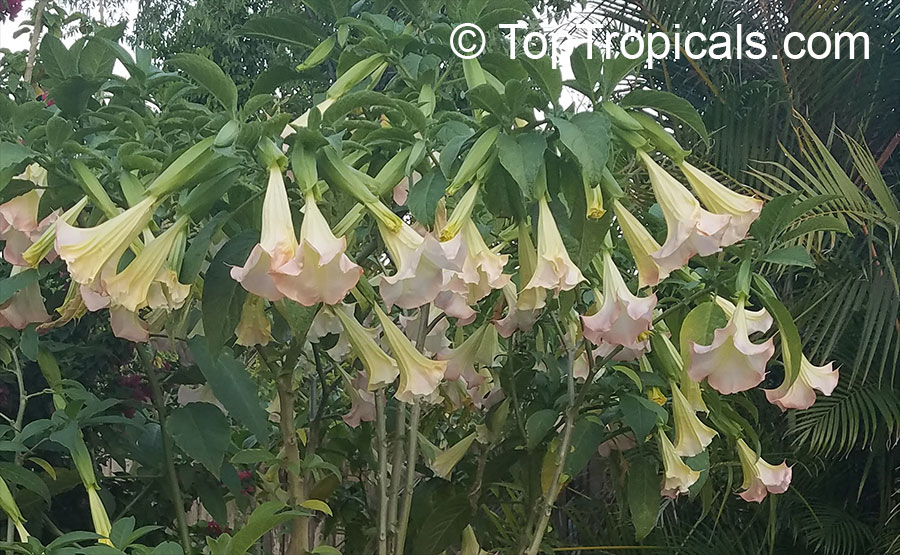
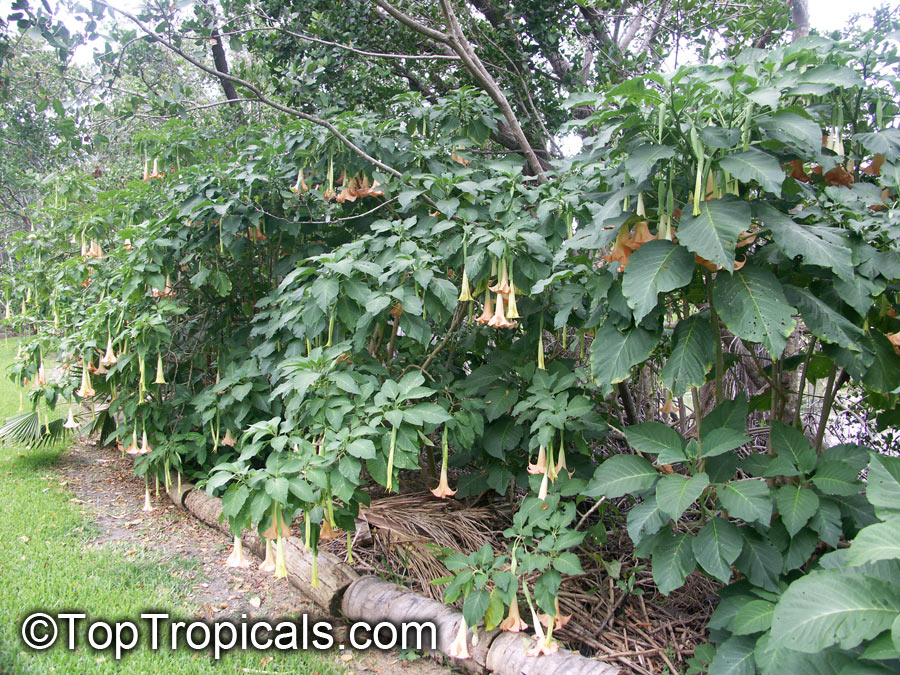
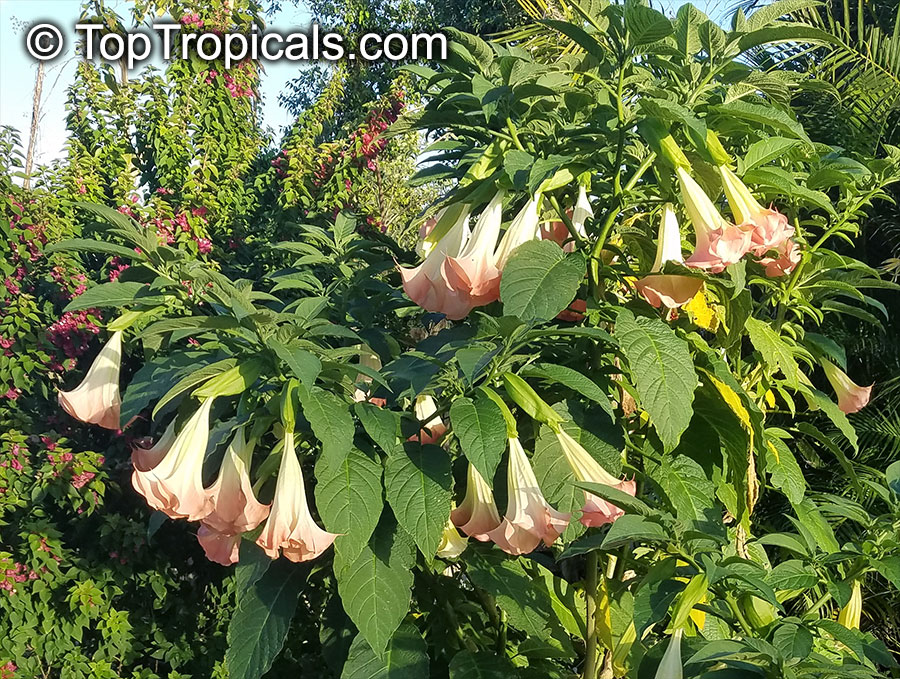
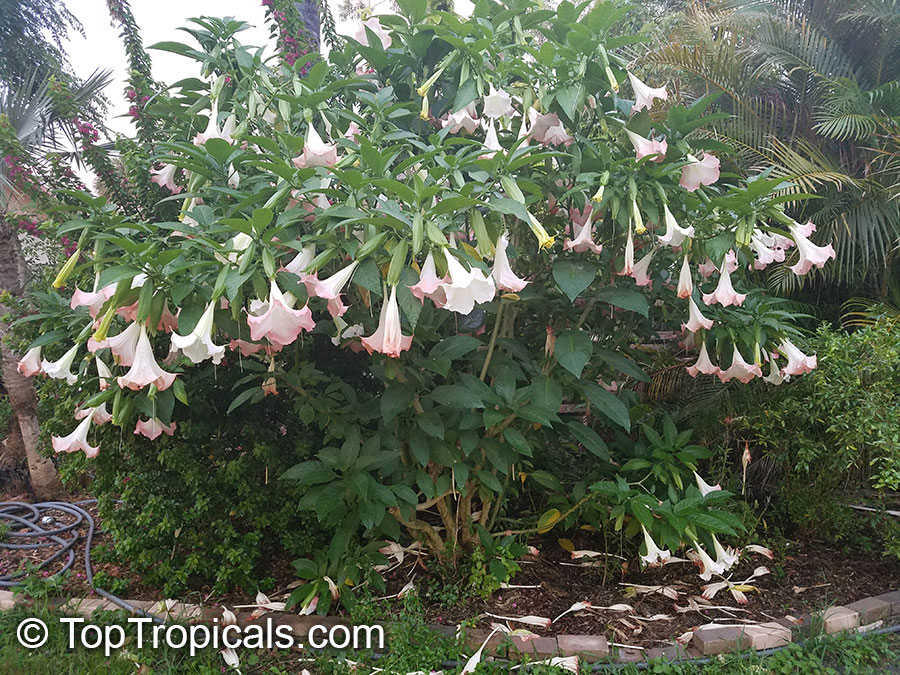
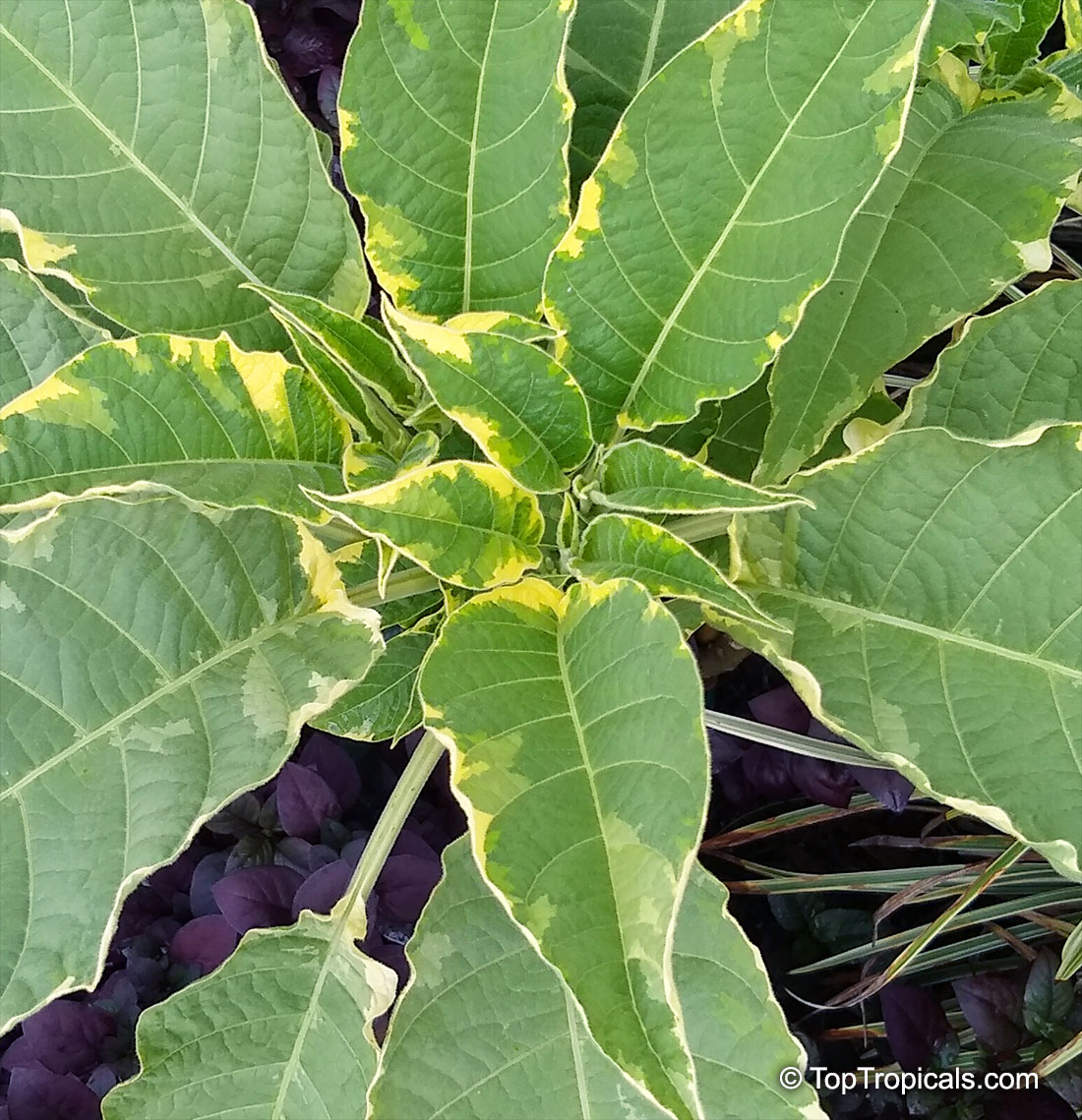
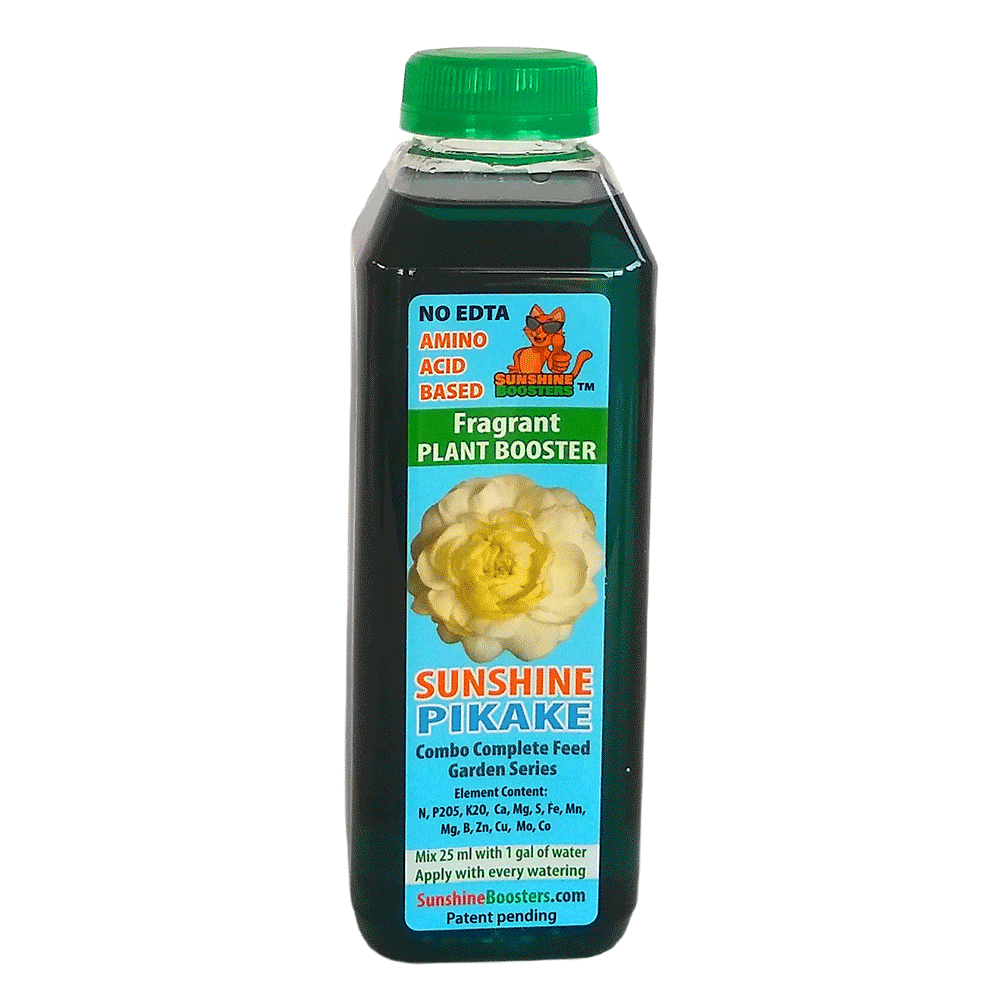 SUNSHINE Pikake (NPK 2-2-4) - eco-friendly concentrated nutrition booster for fragrant flowers. Improves quantity and quality of flowers. Encourages profuse blooming. Increases flower fragrance intensity. Can be used with every watering. For best results, use in combination with
SUNSHINE Pikake (NPK 2-2-4) - eco-friendly concentrated nutrition booster for fragrant flowers. Improves quantity and quality of flowers. Encourages profuse blooming. Increases flower fragrance intensity. Can be used with every watering. For best results, use in combination with 